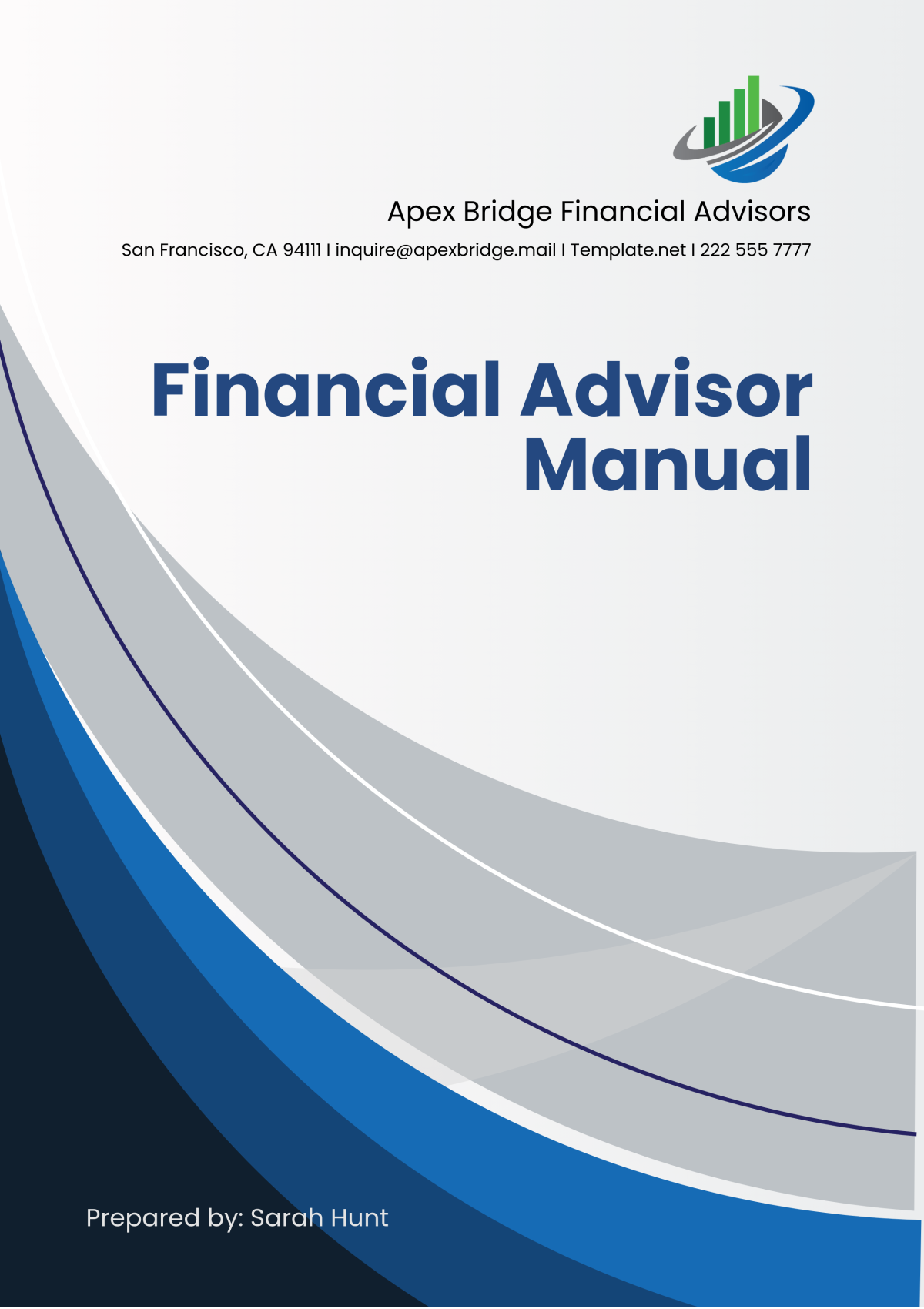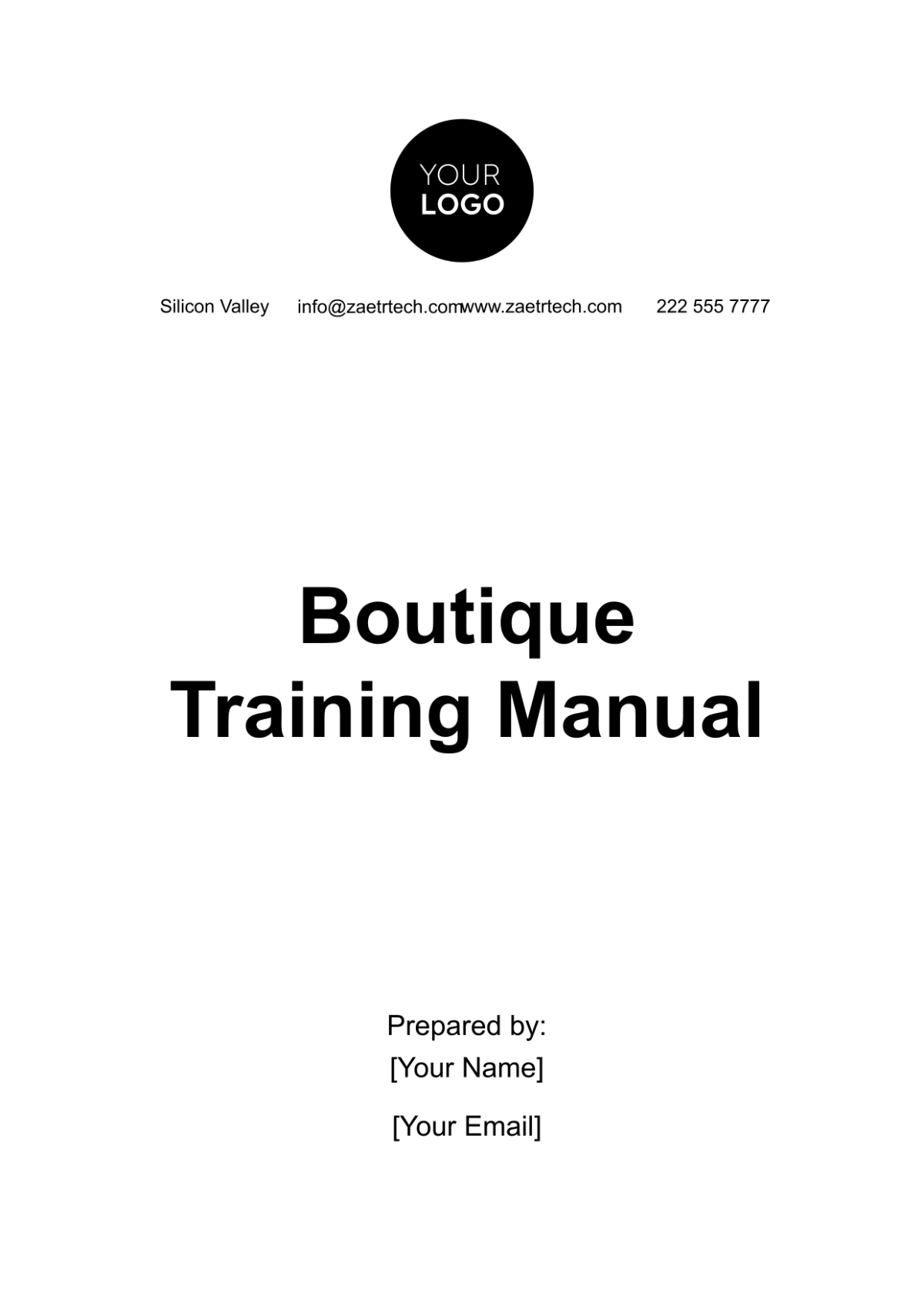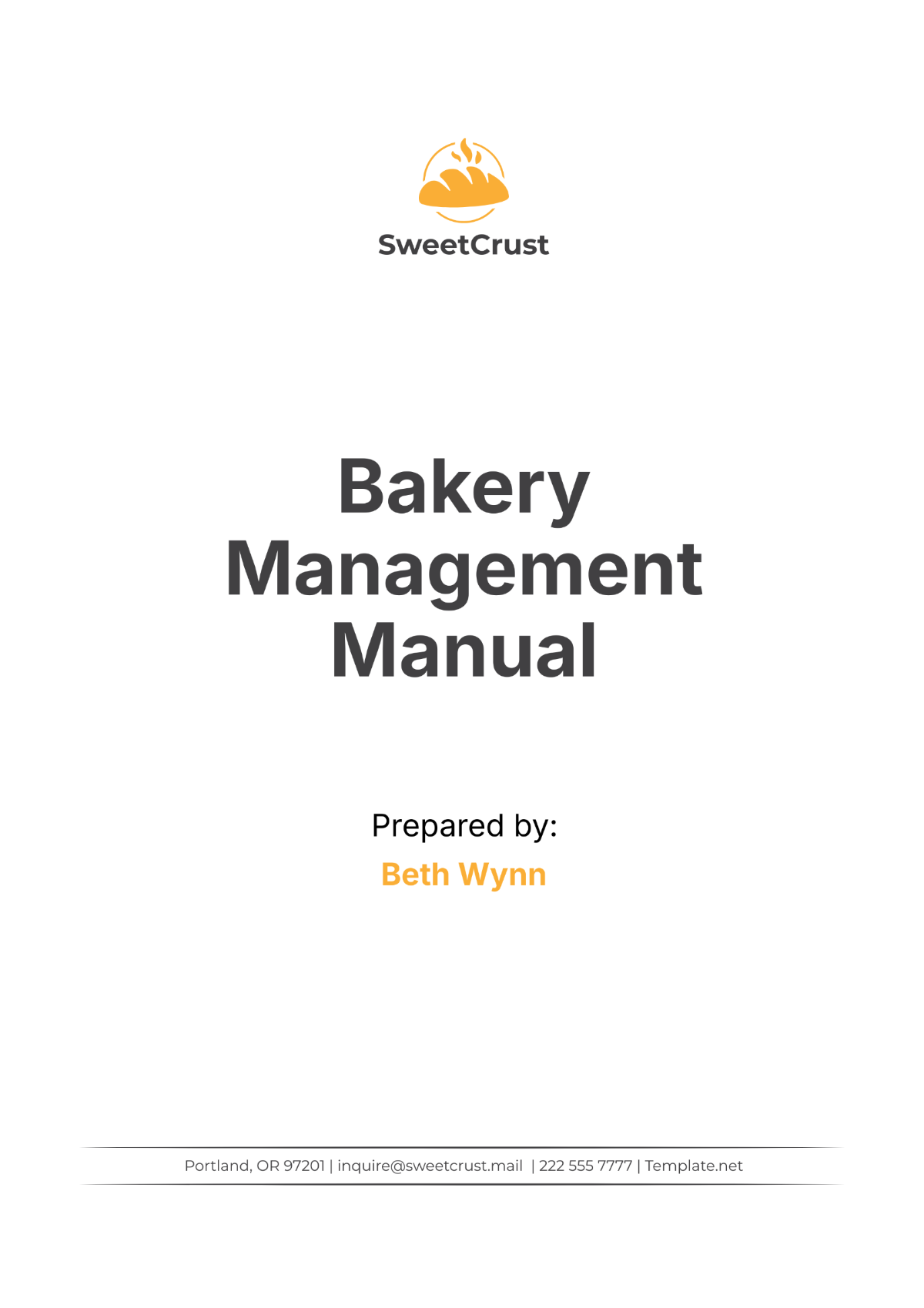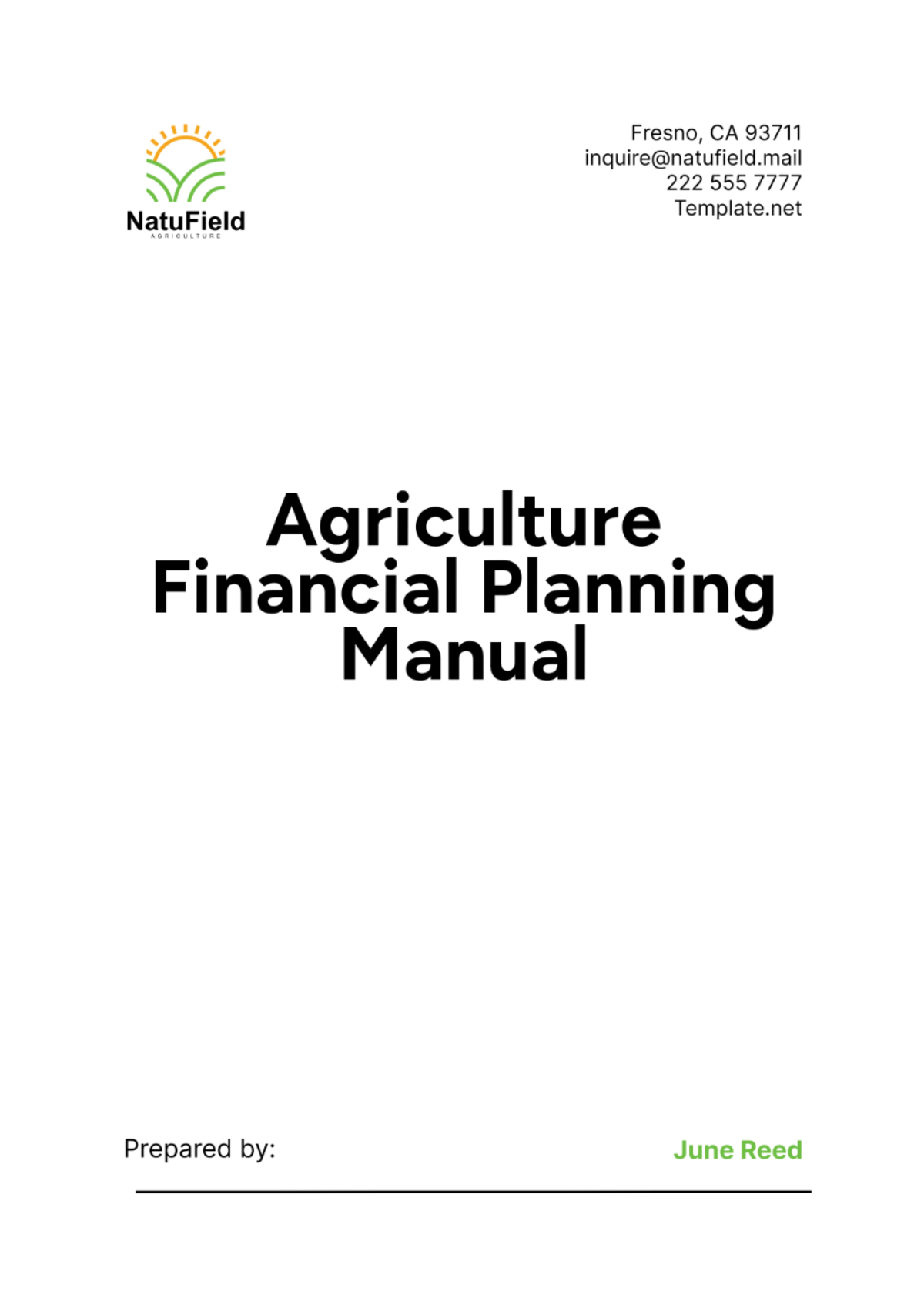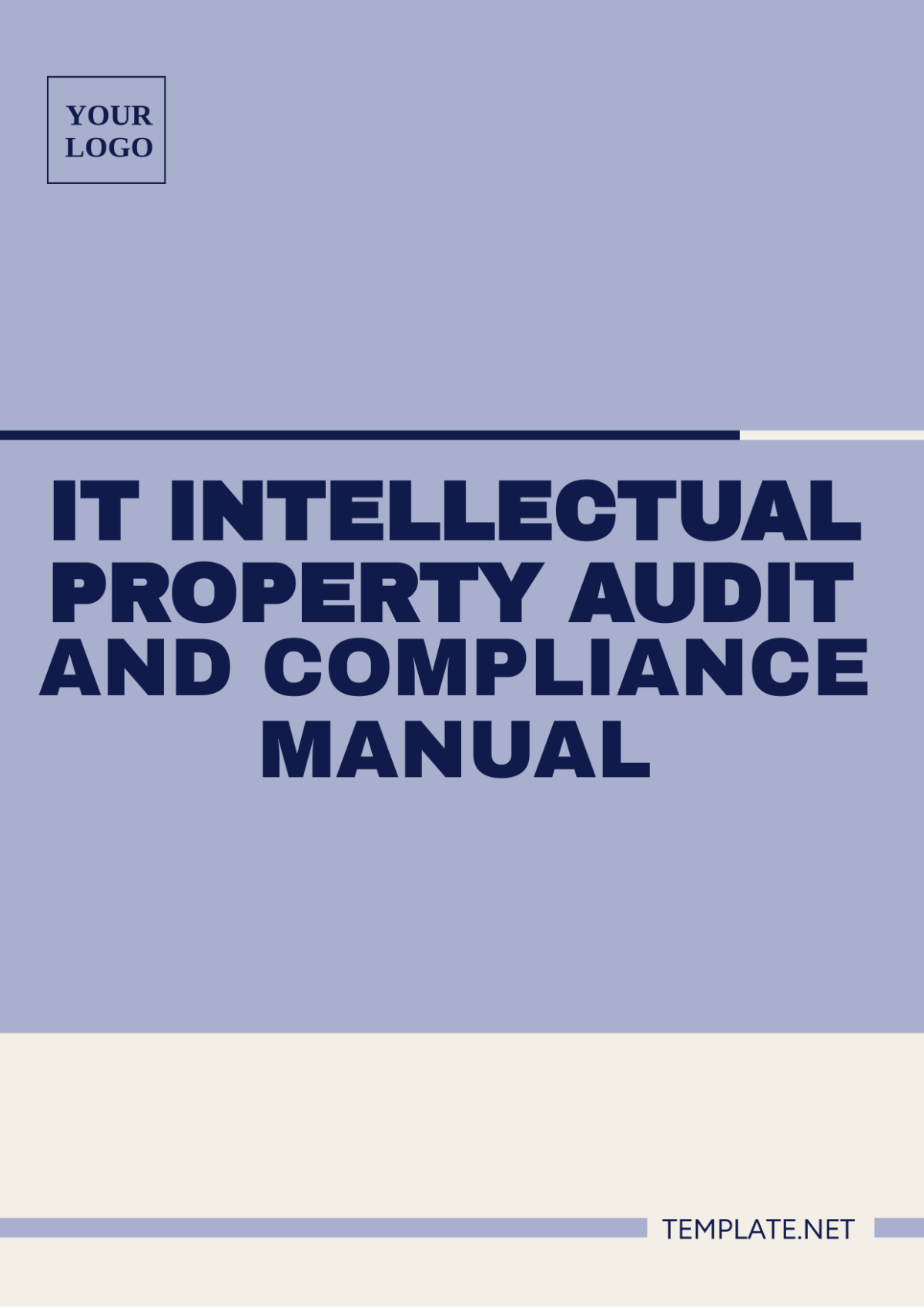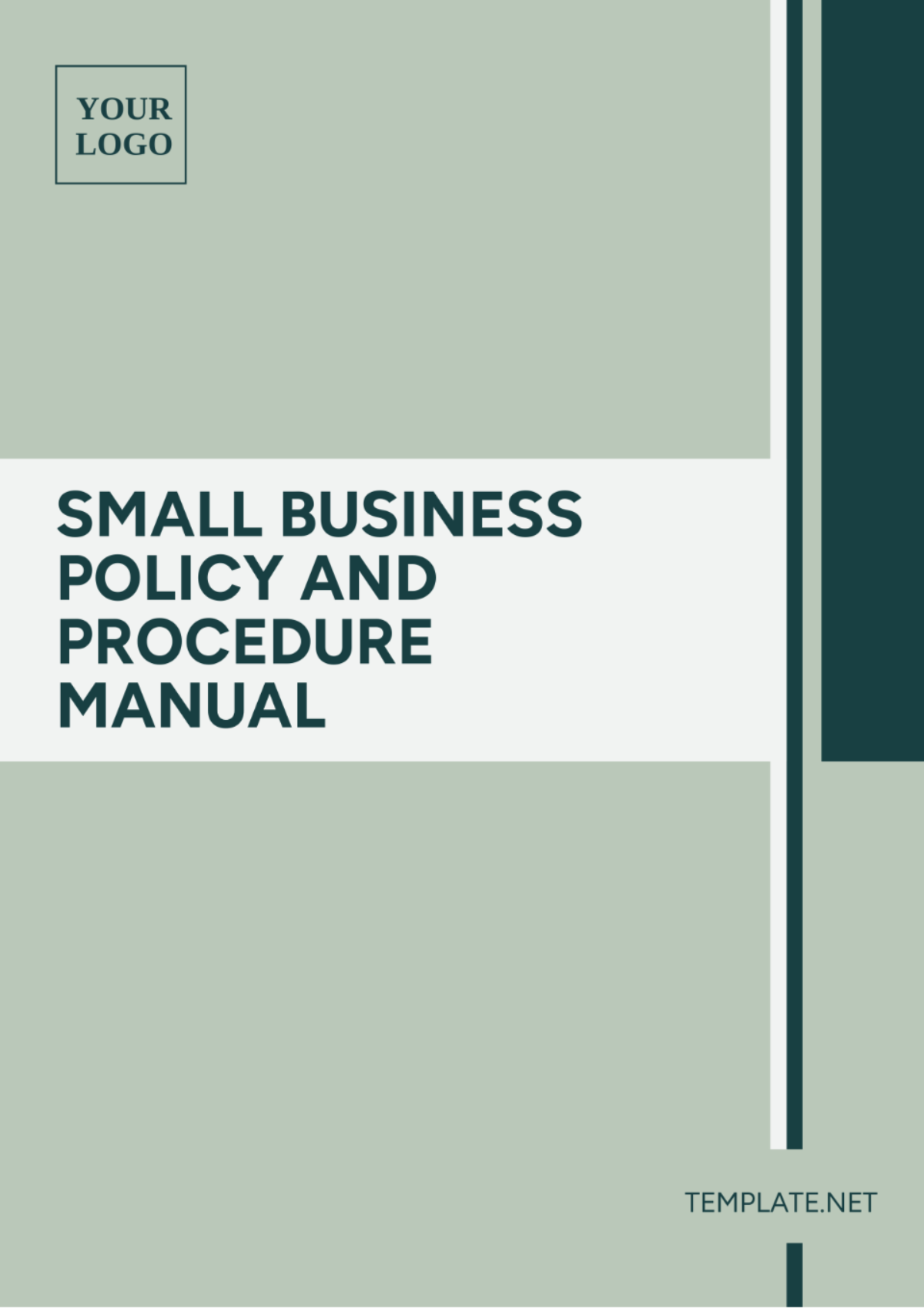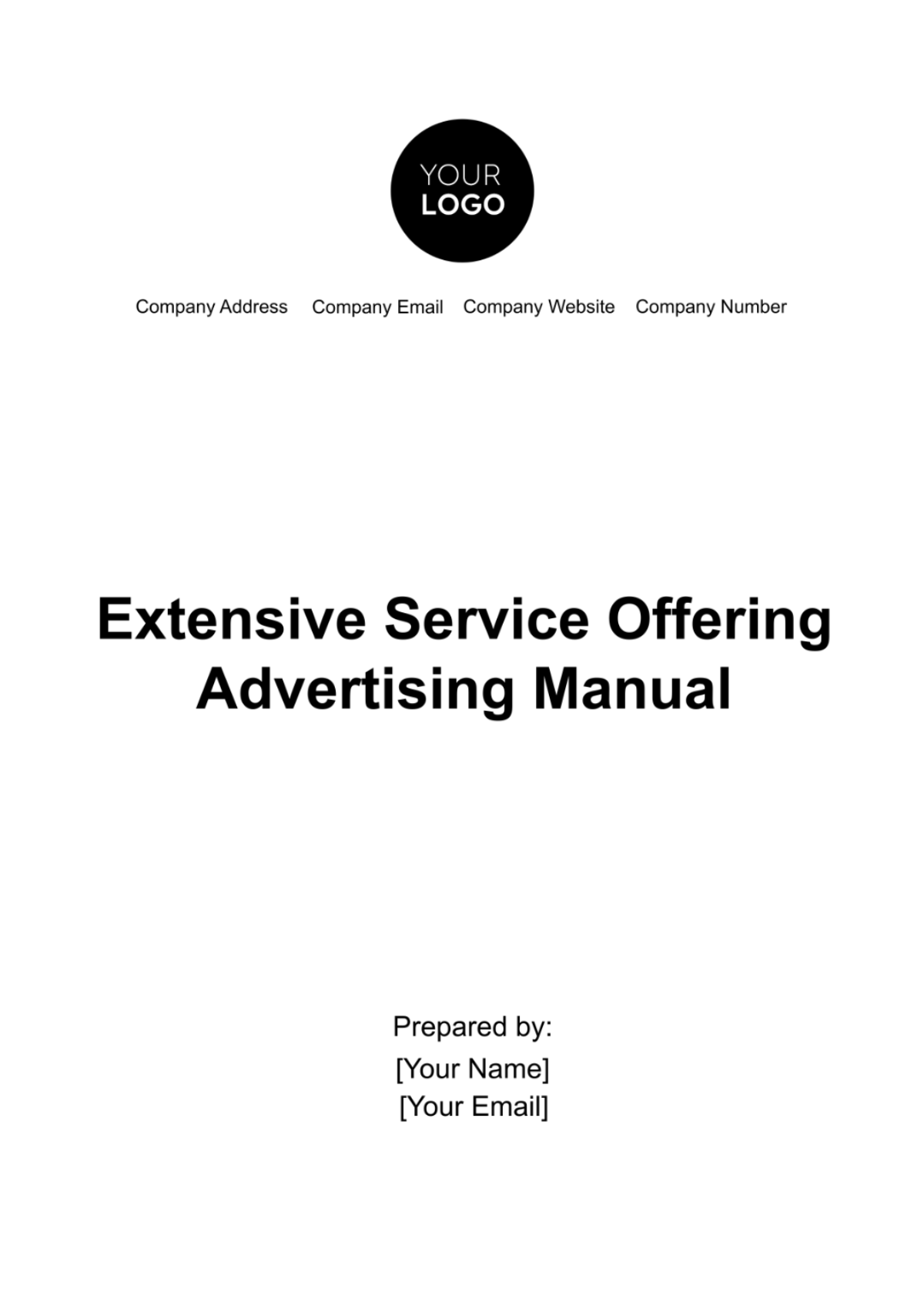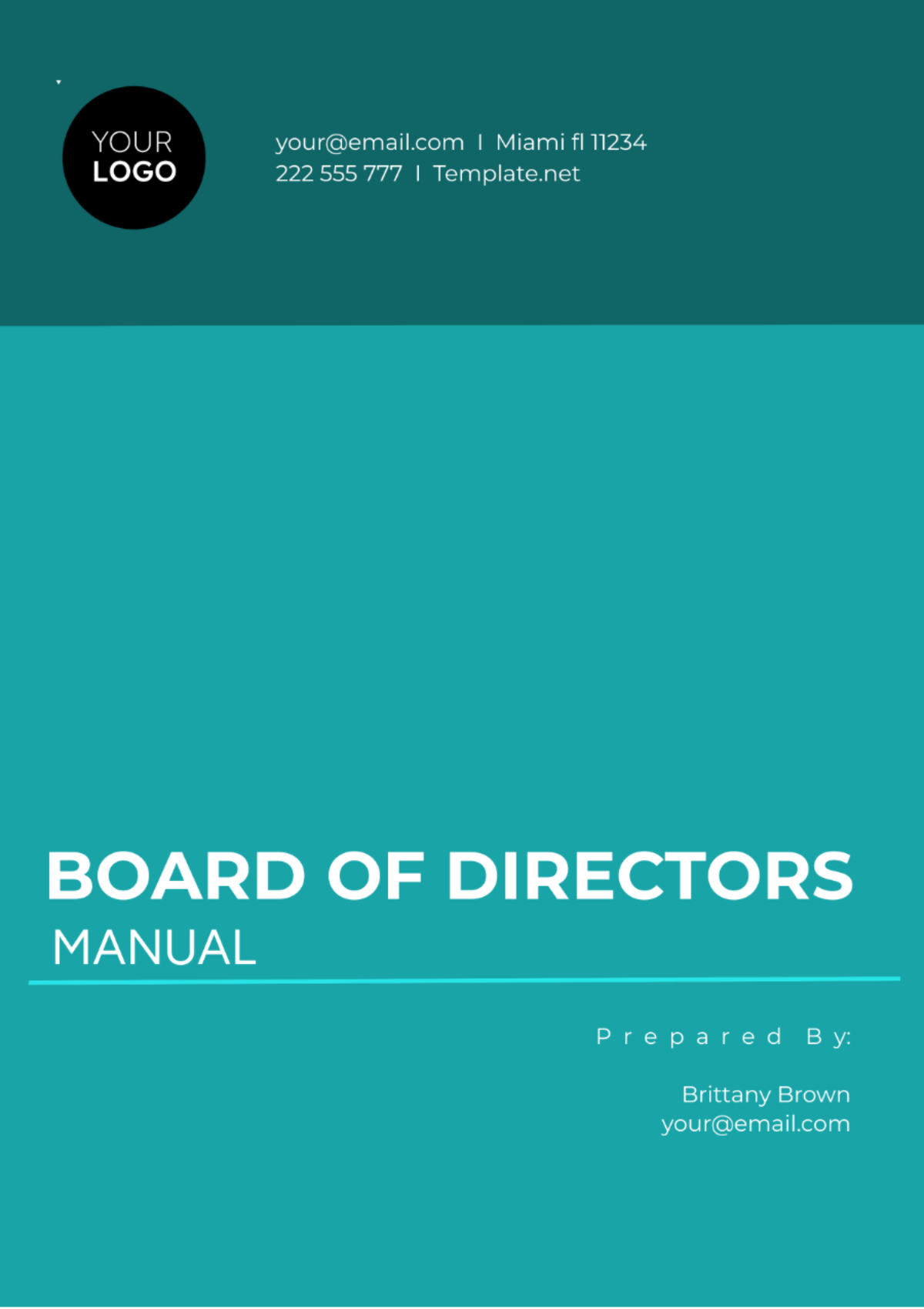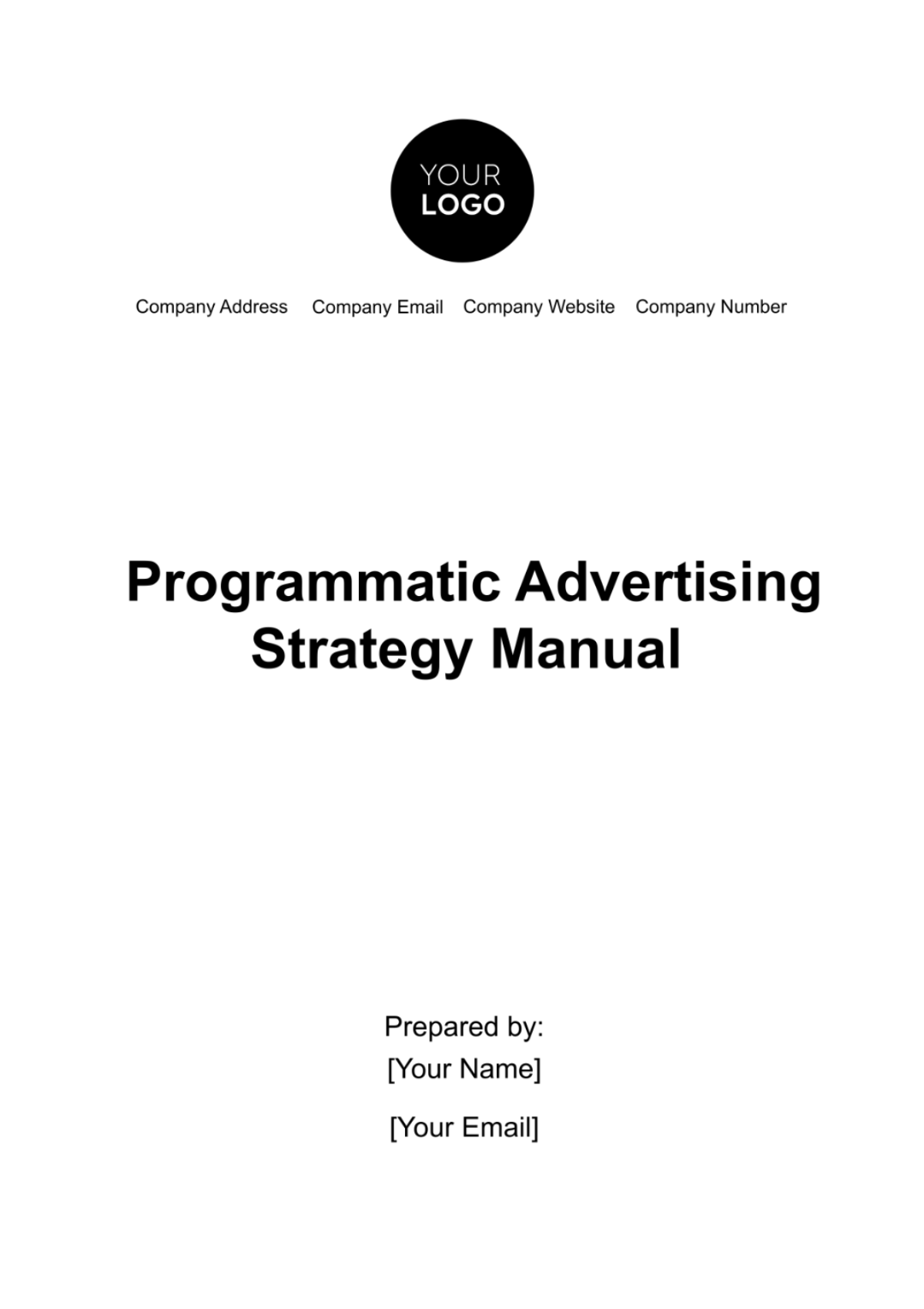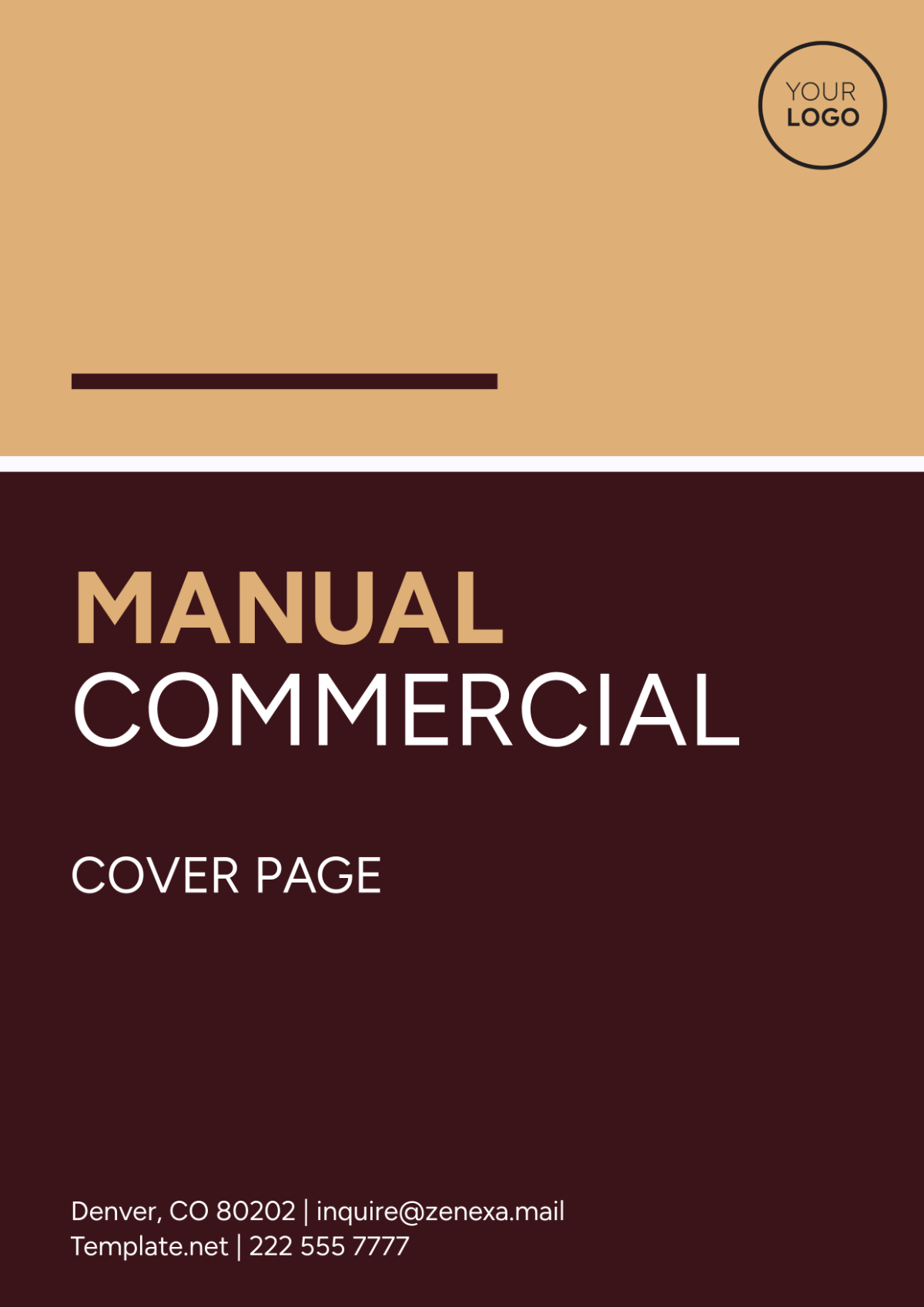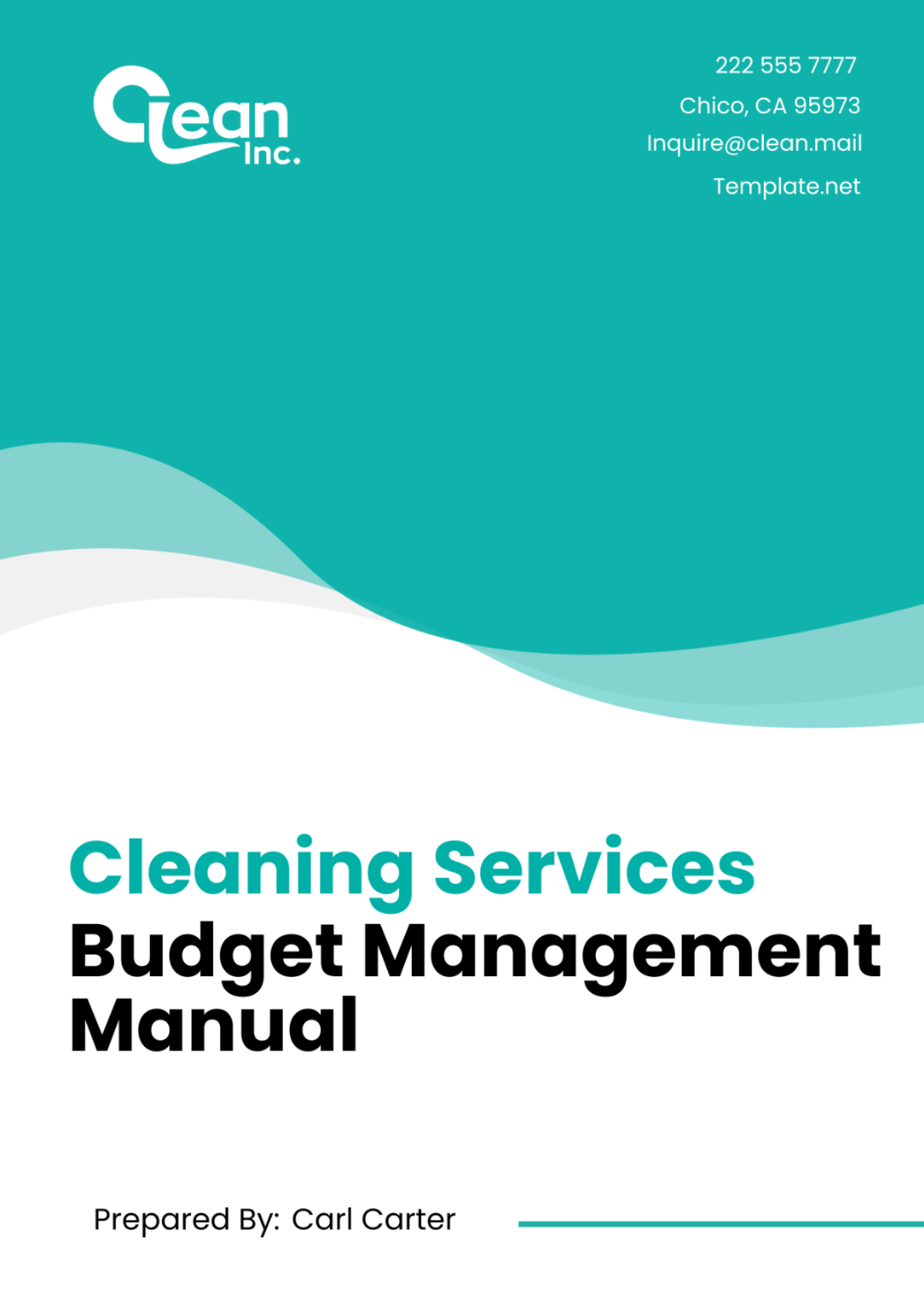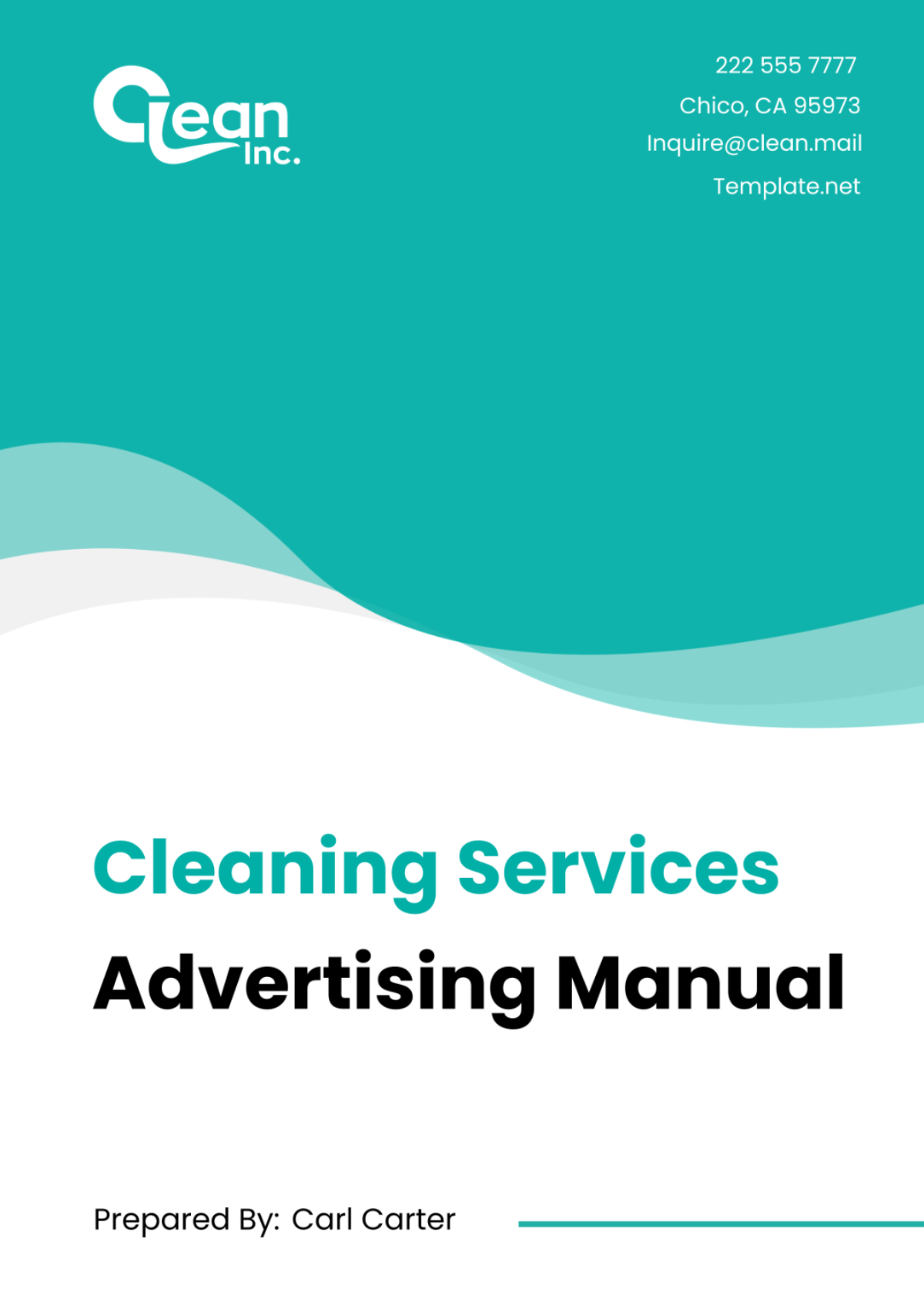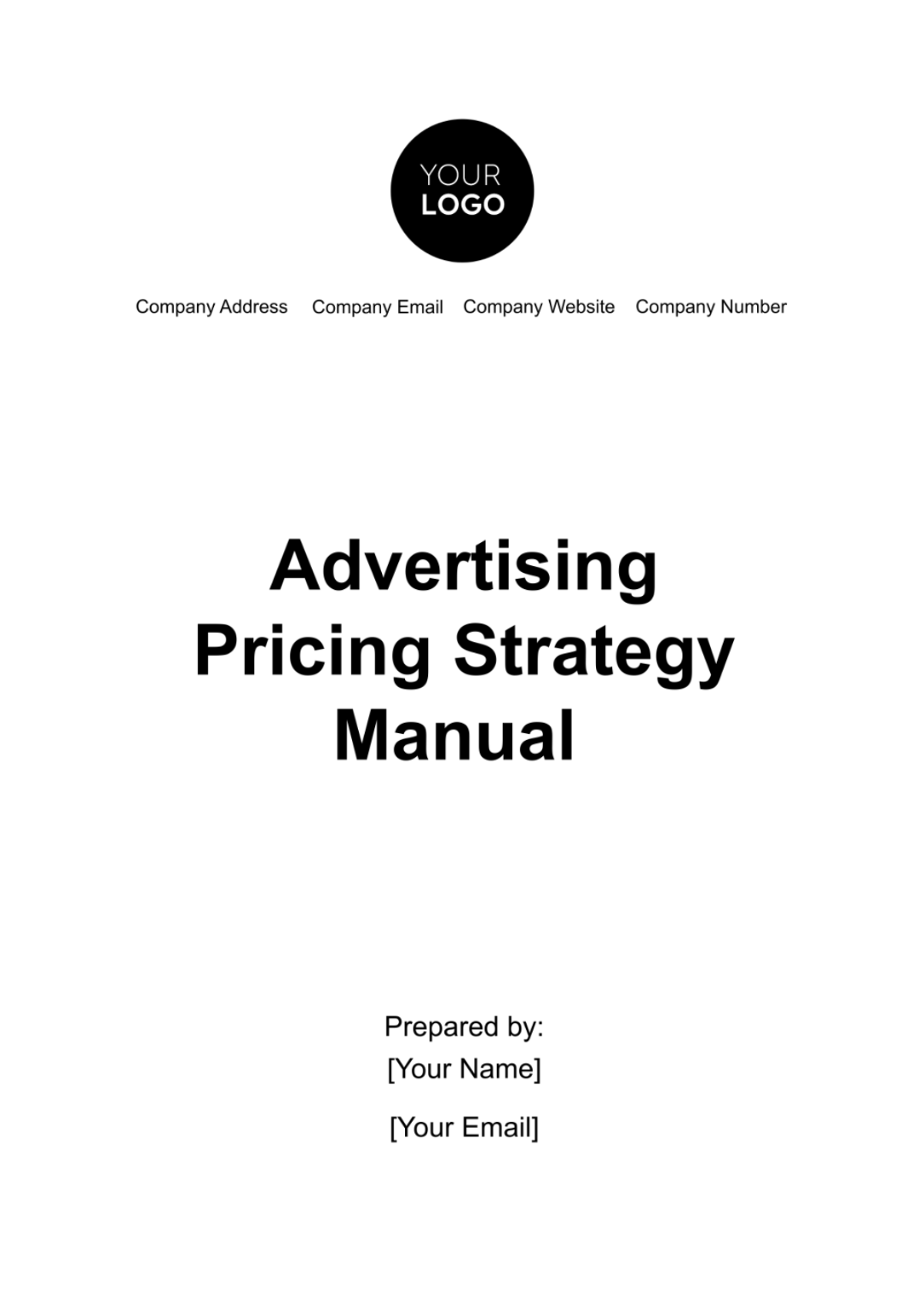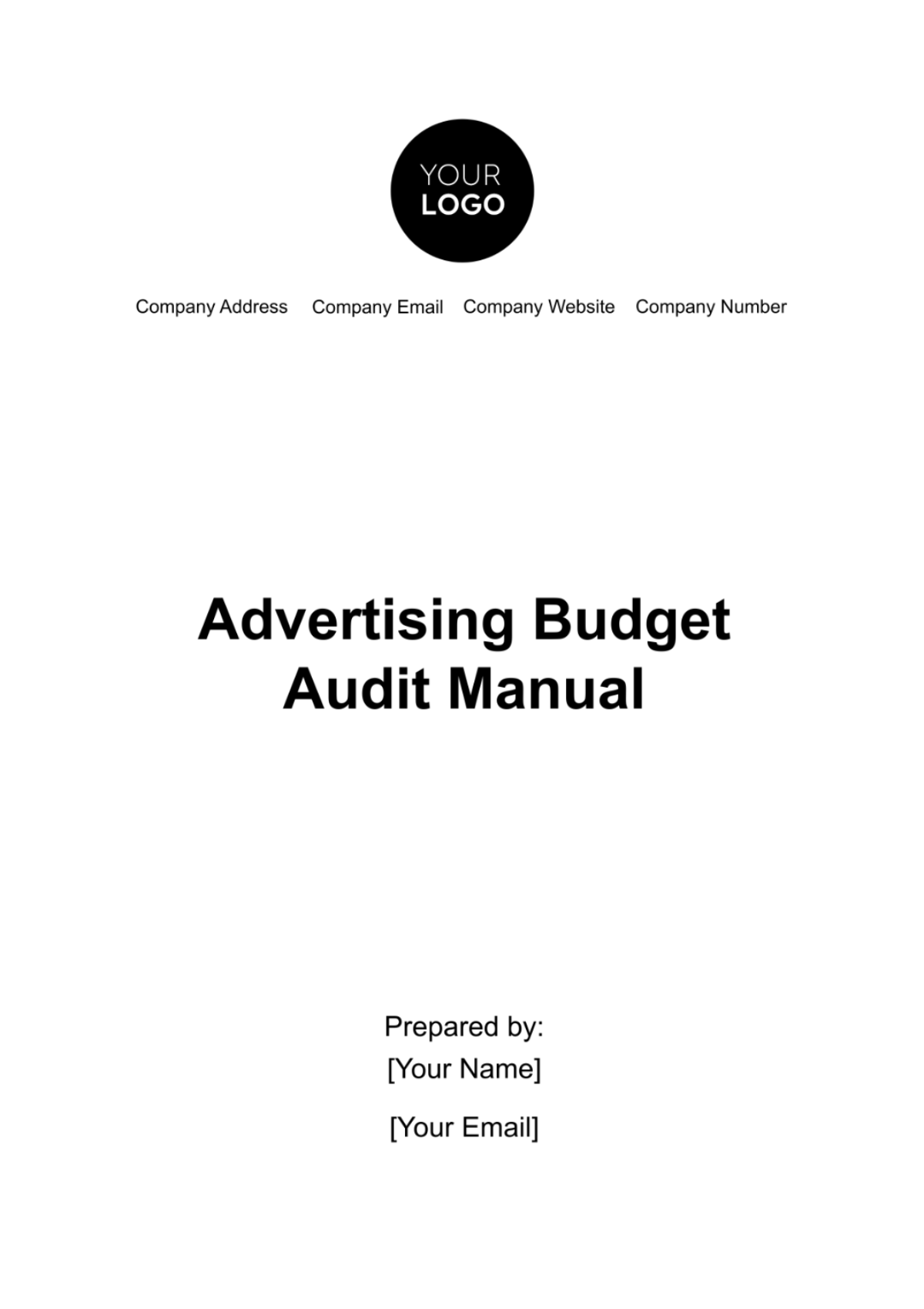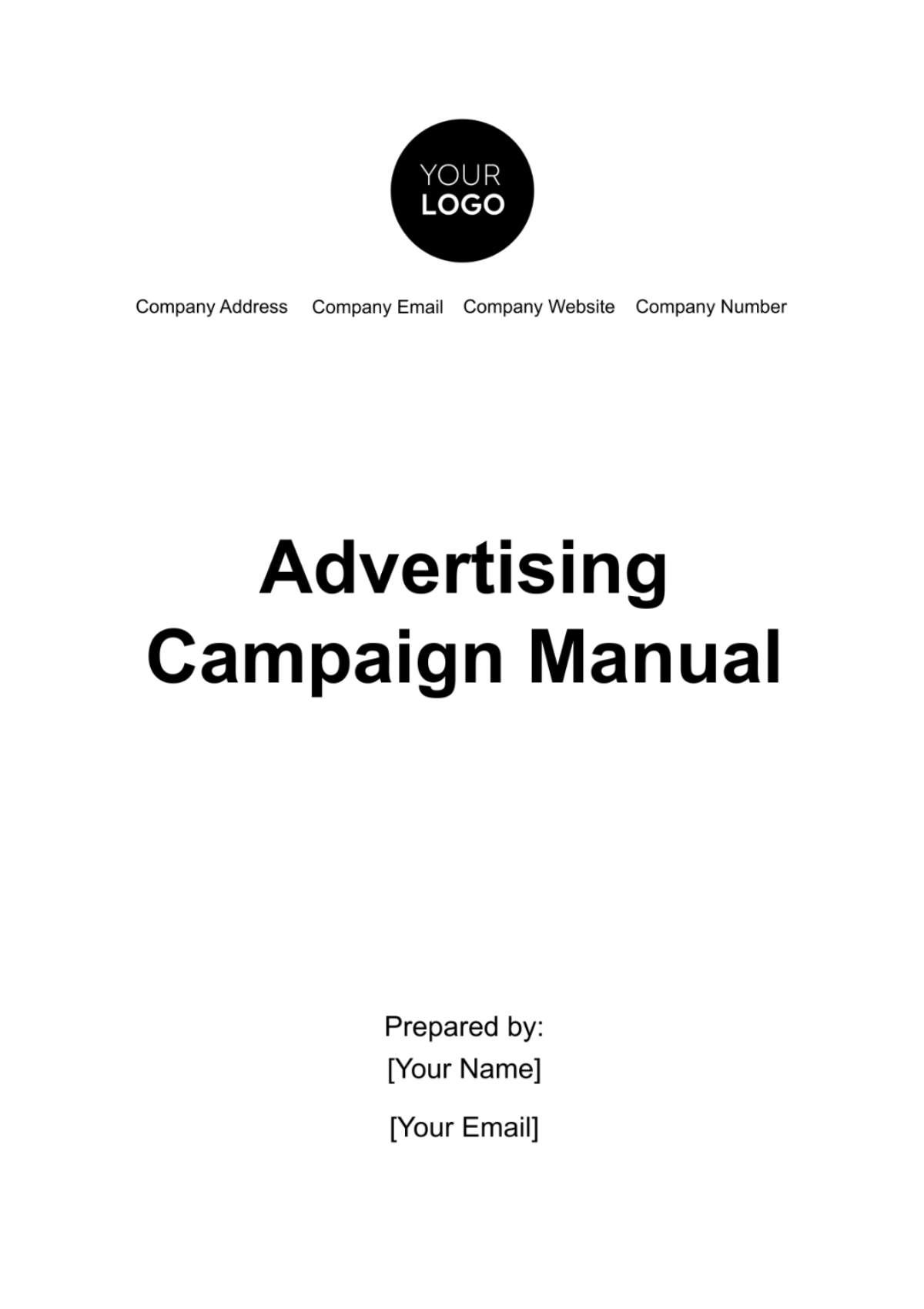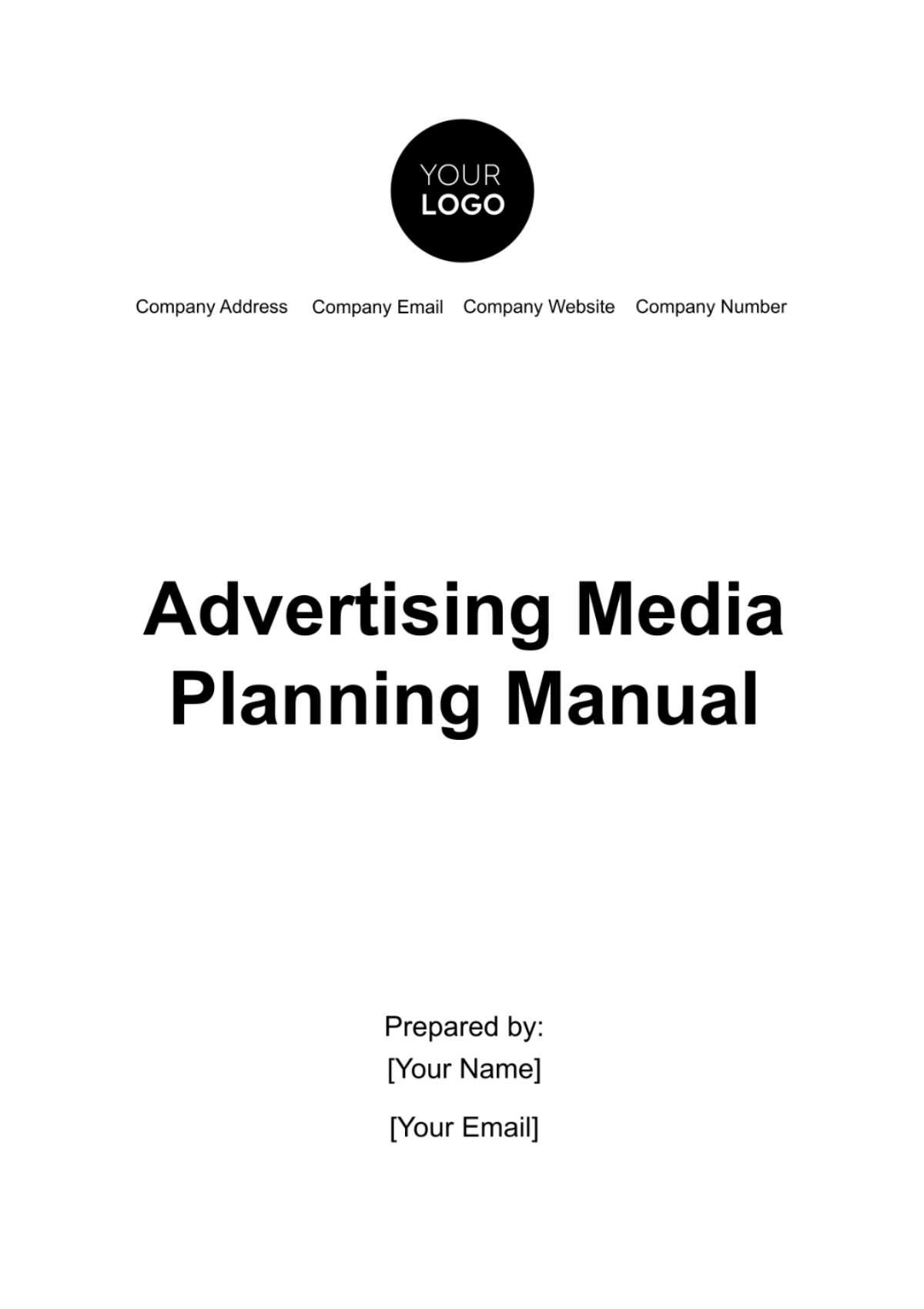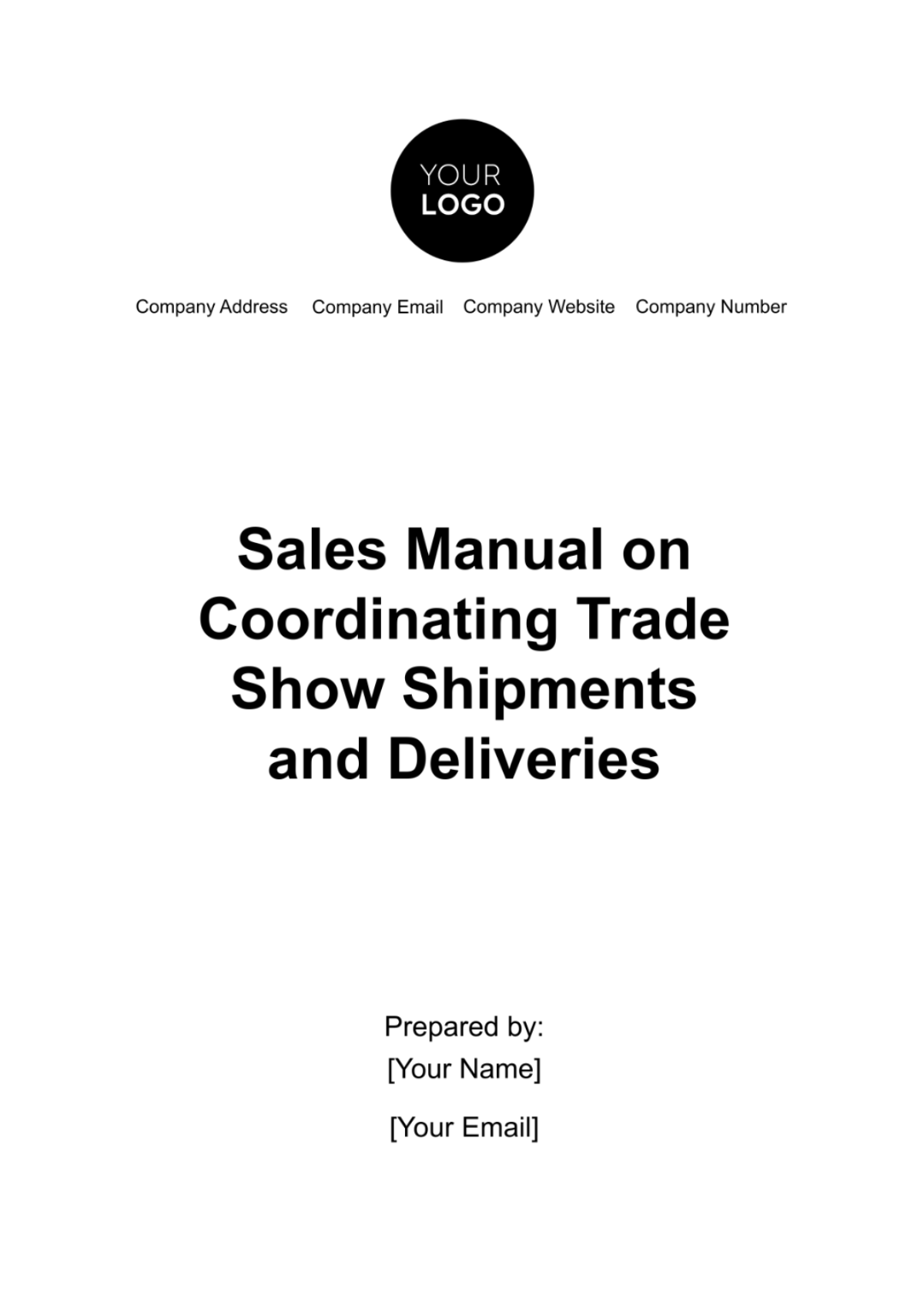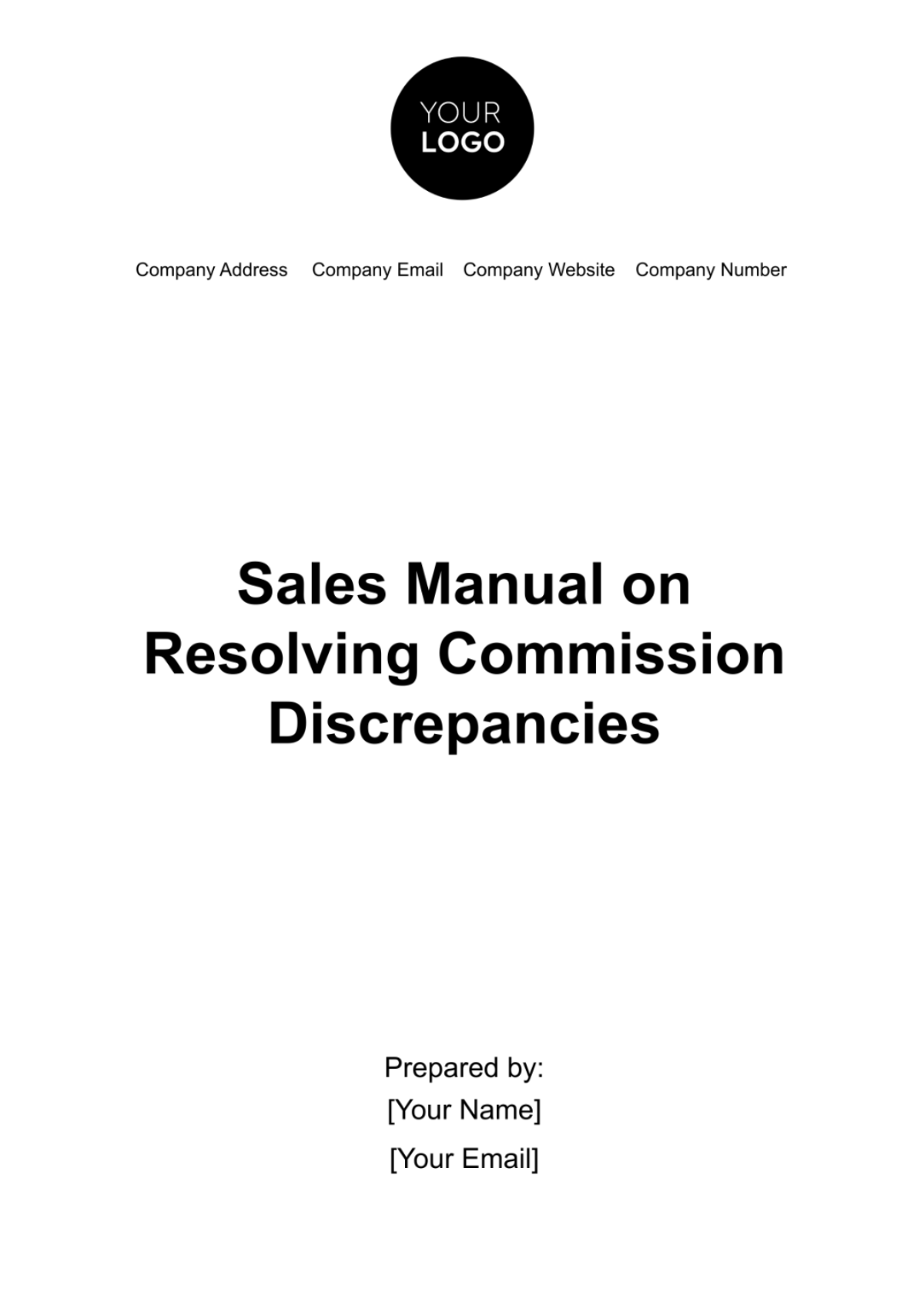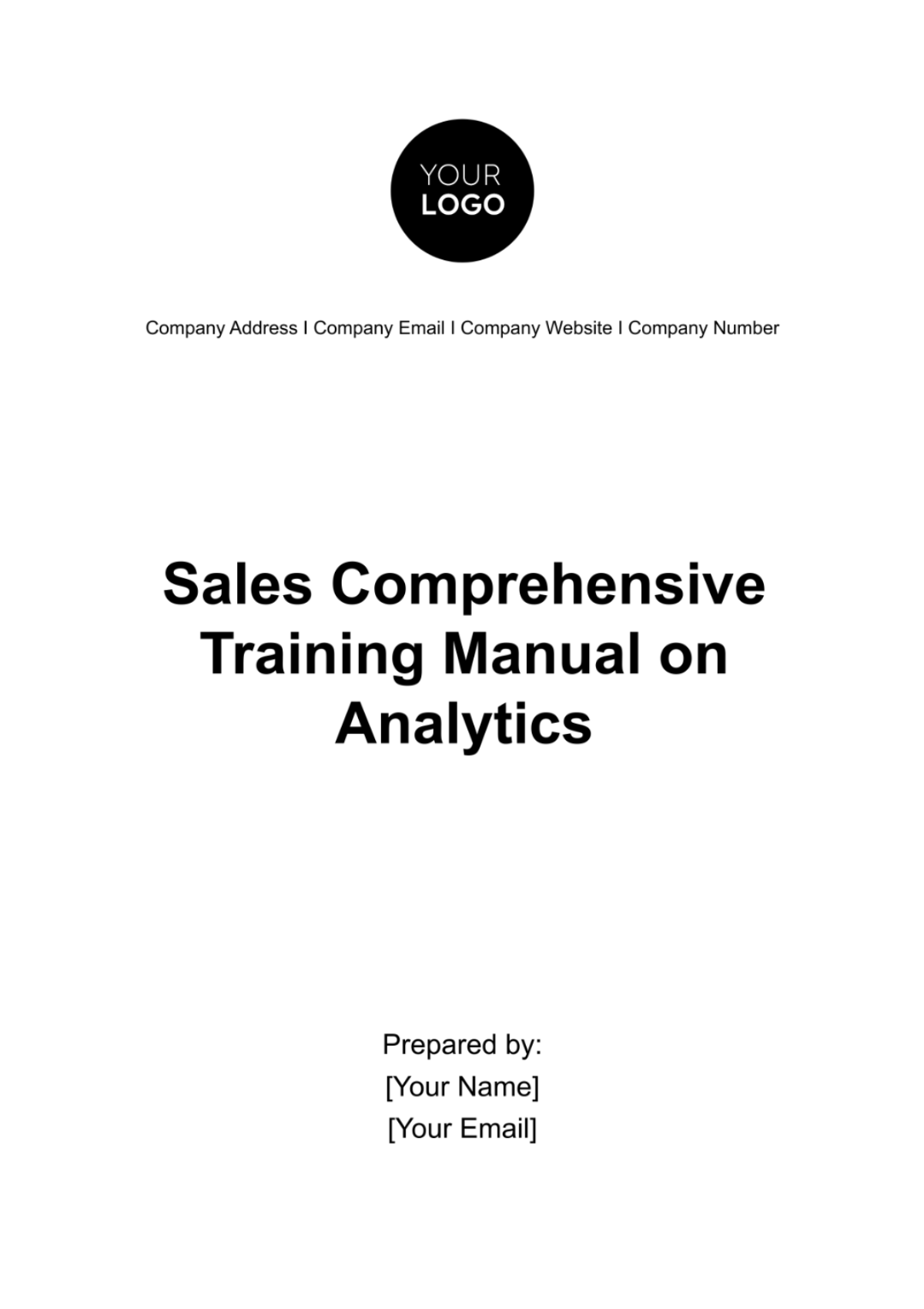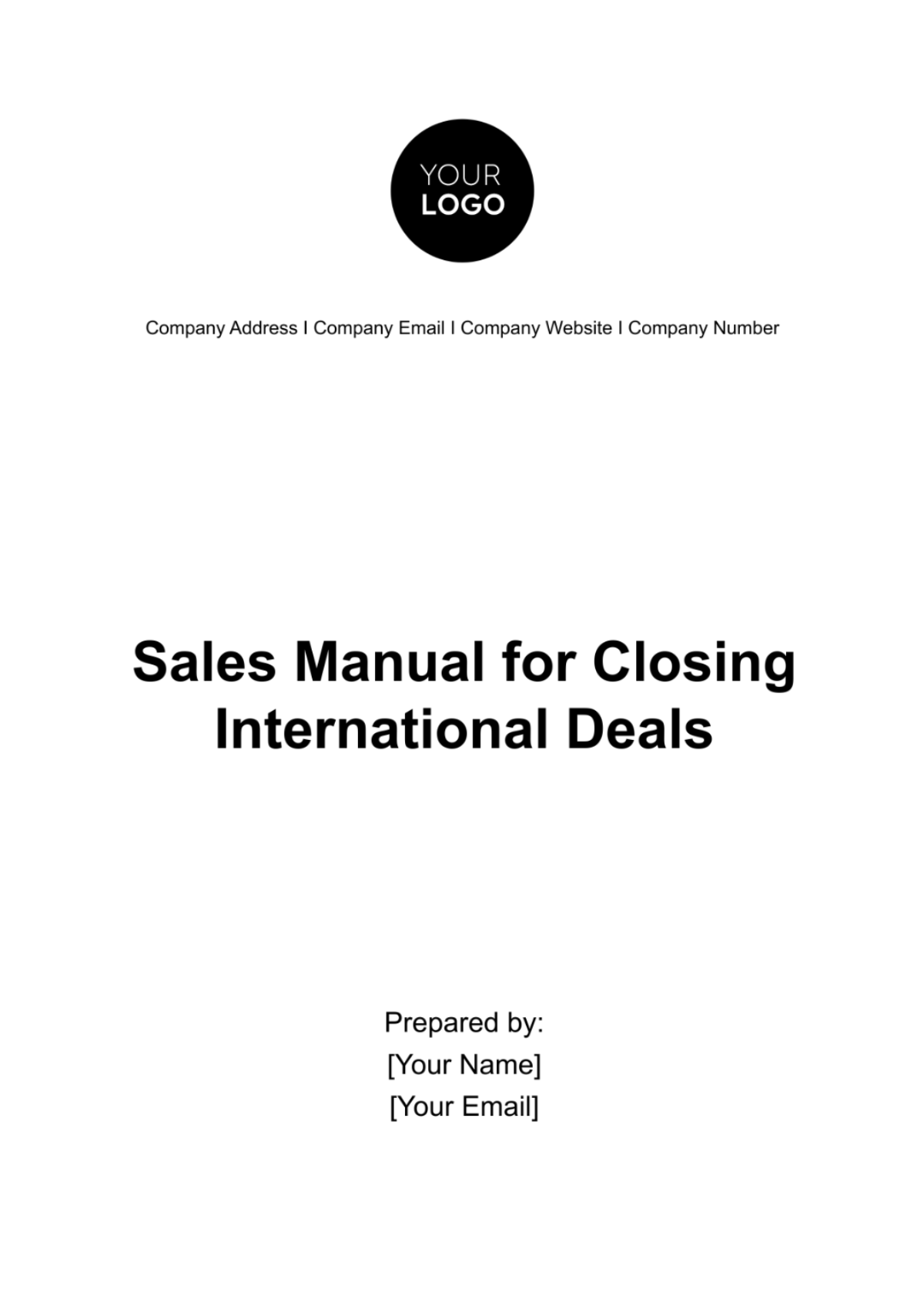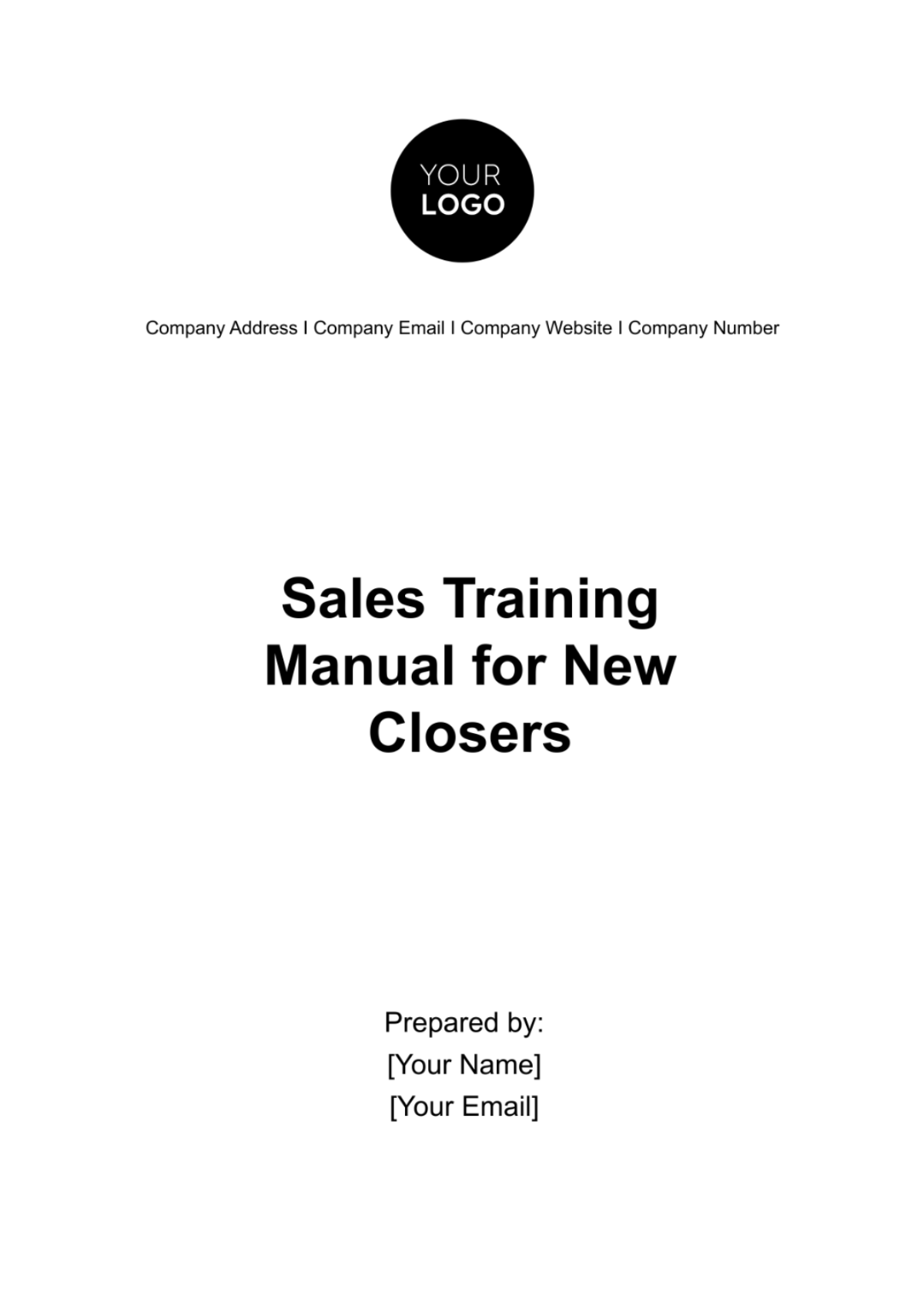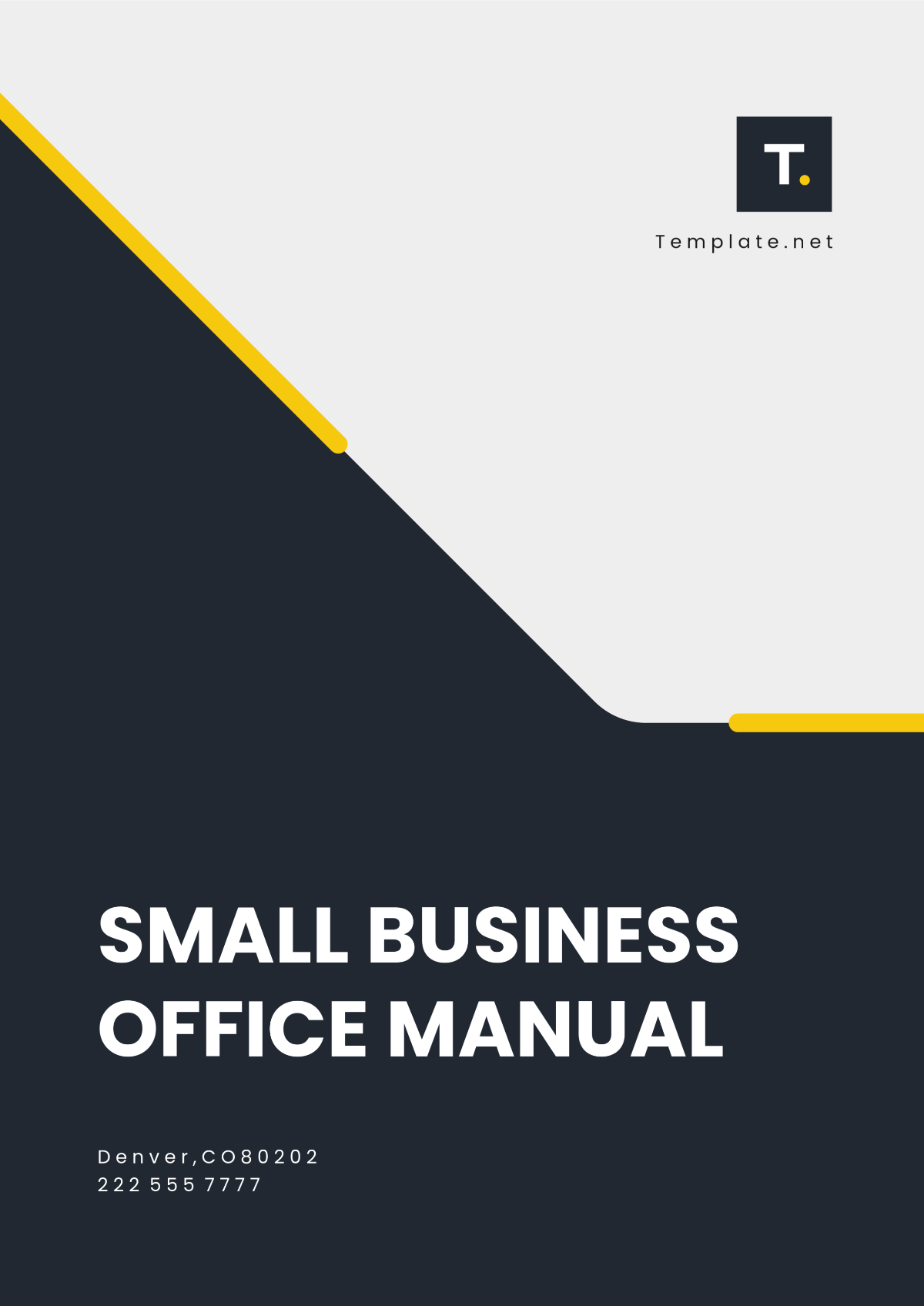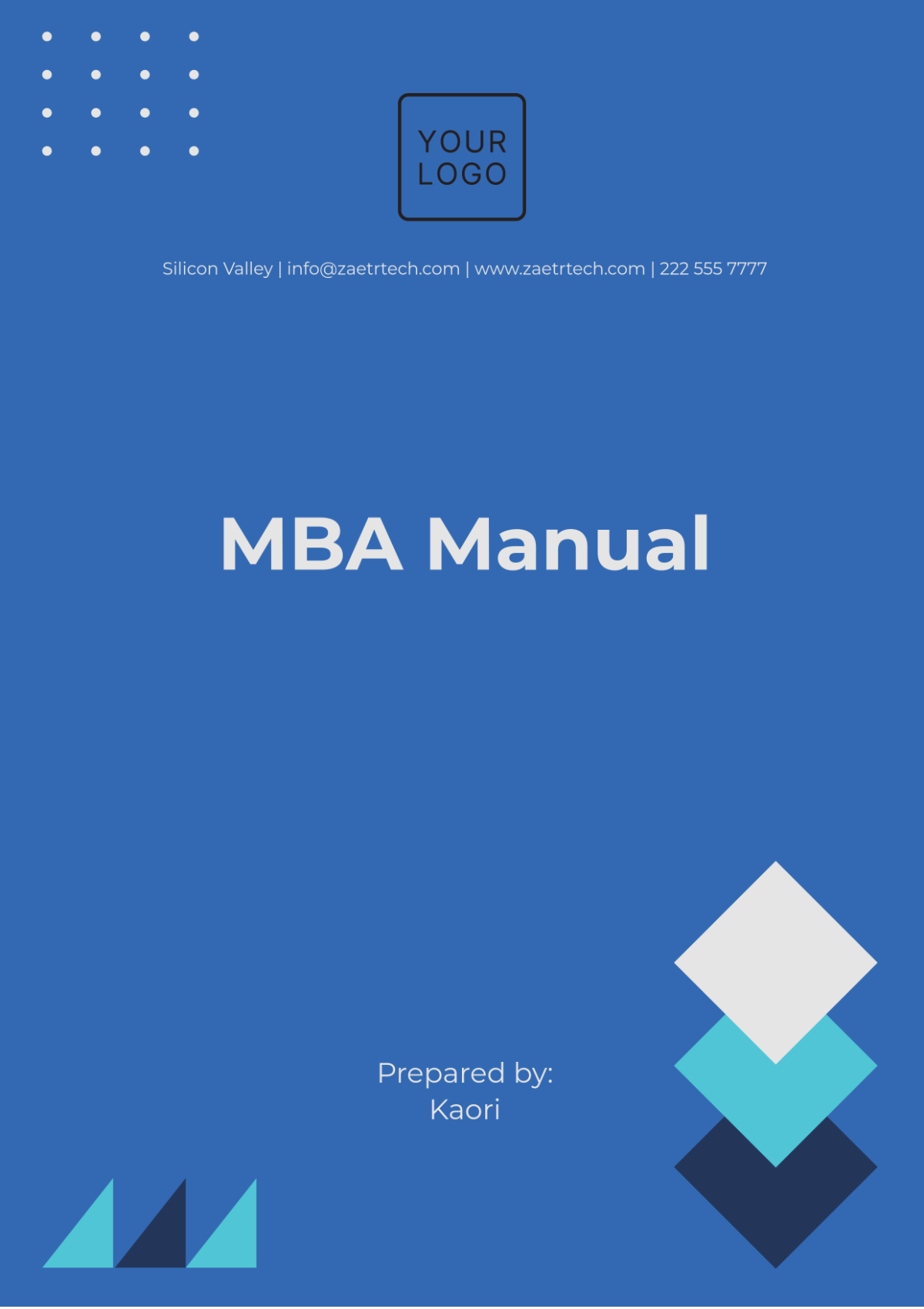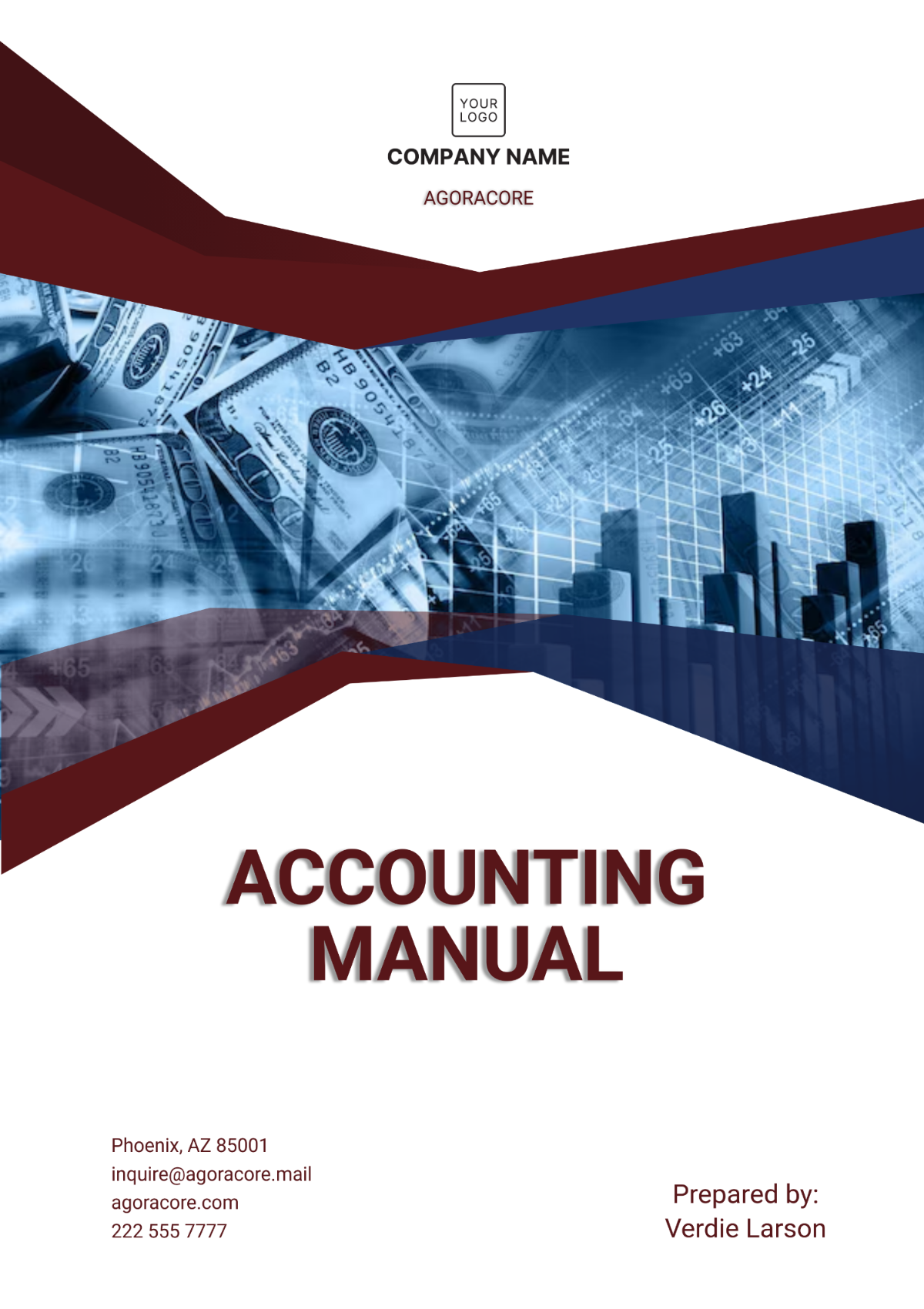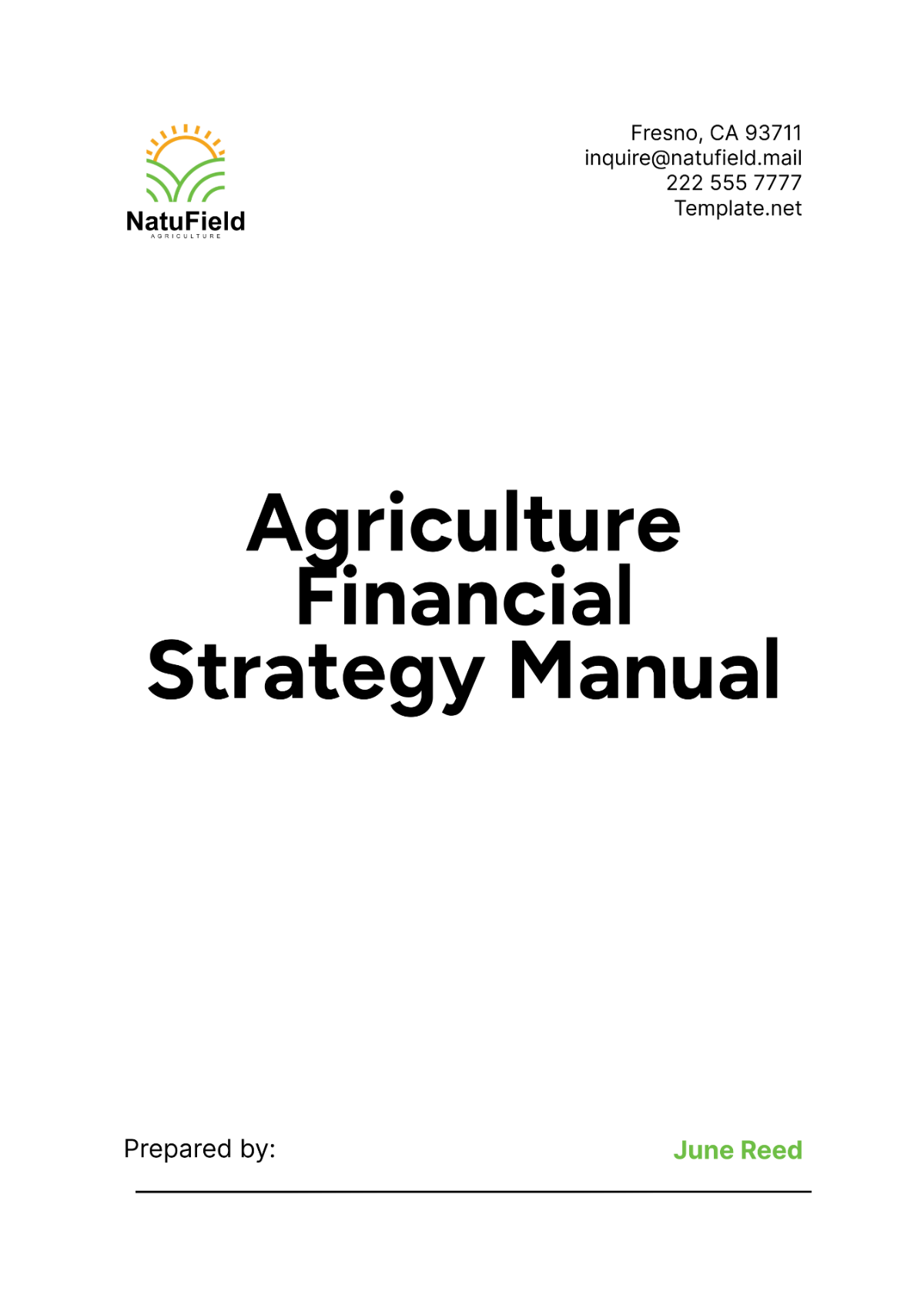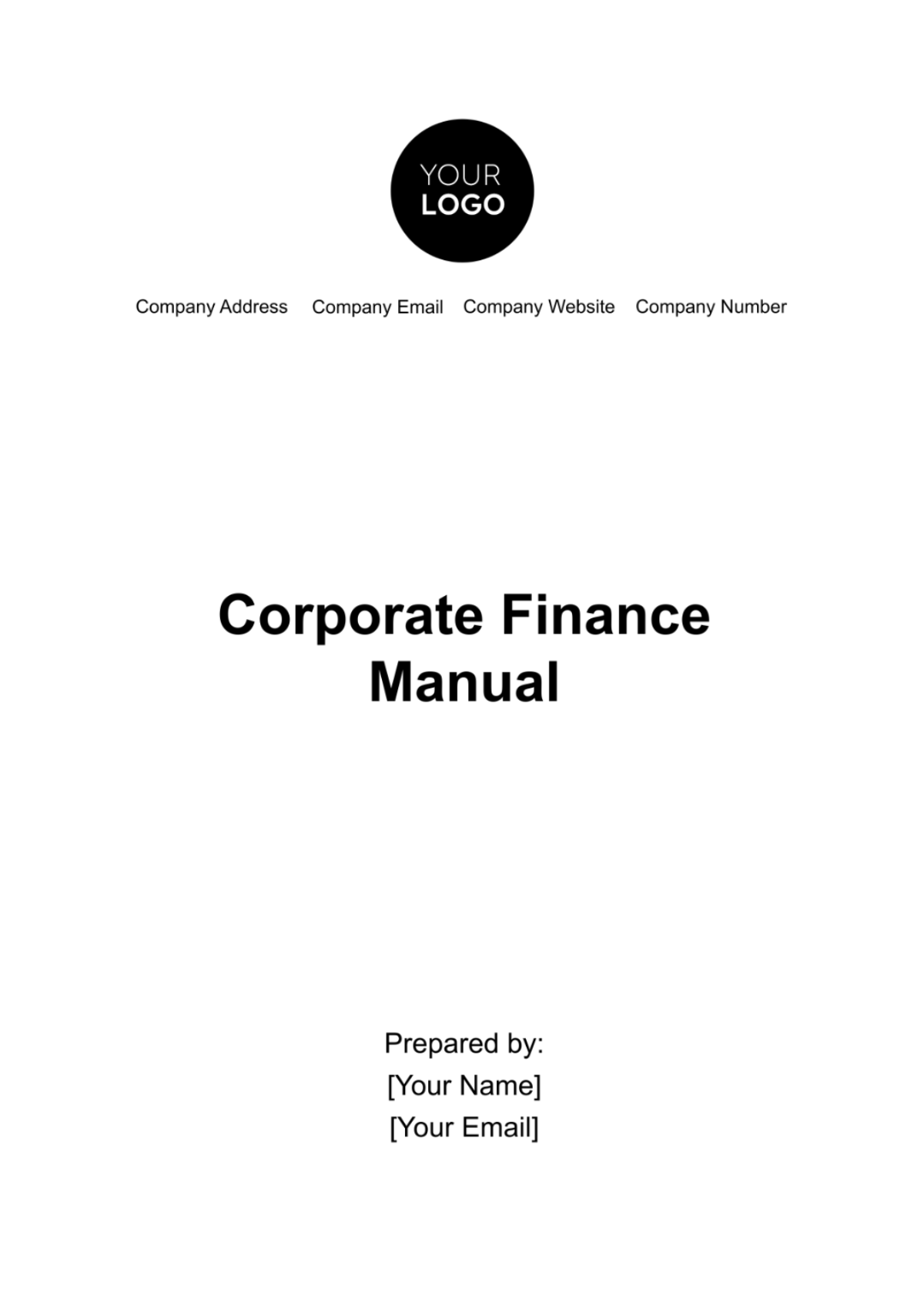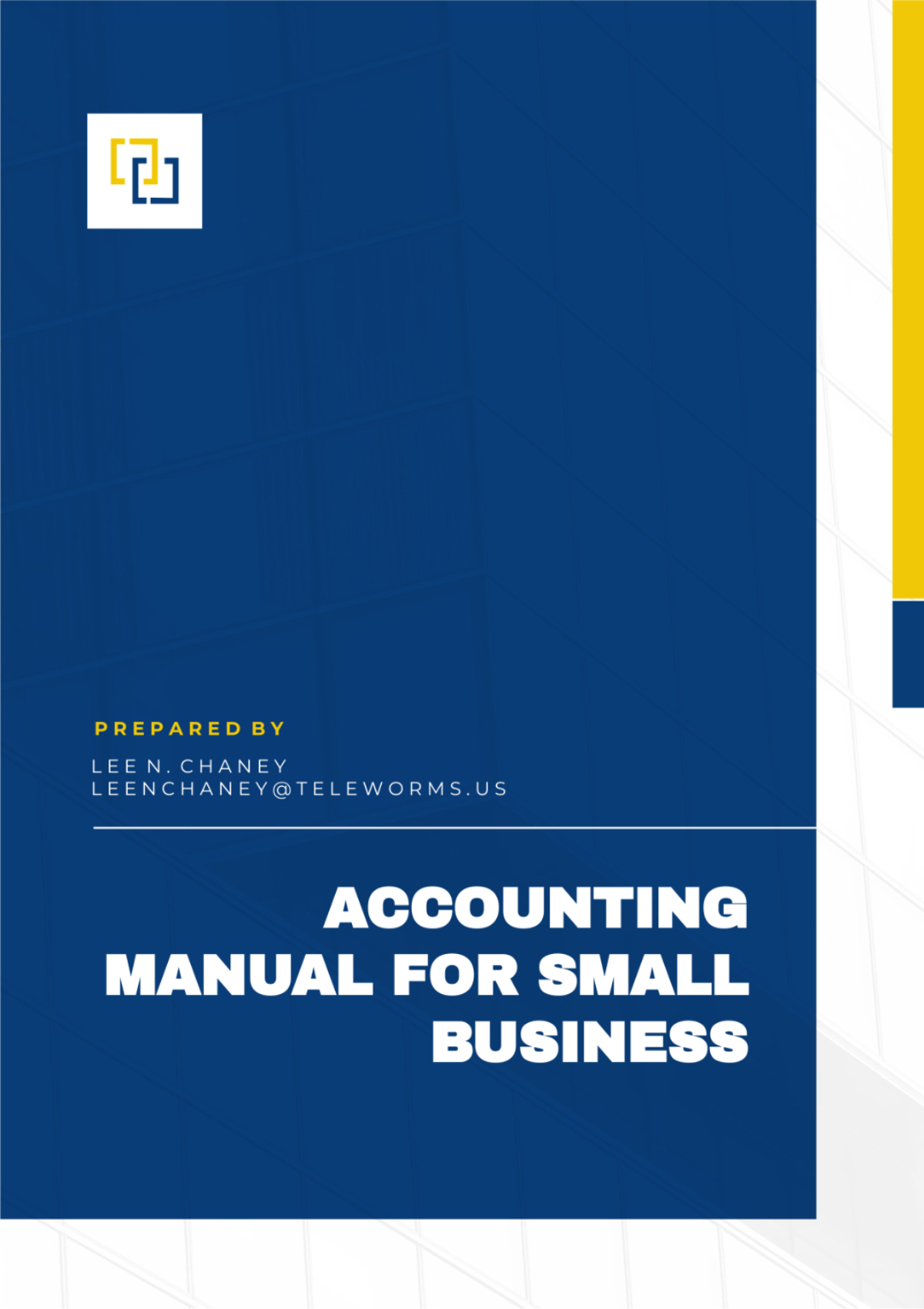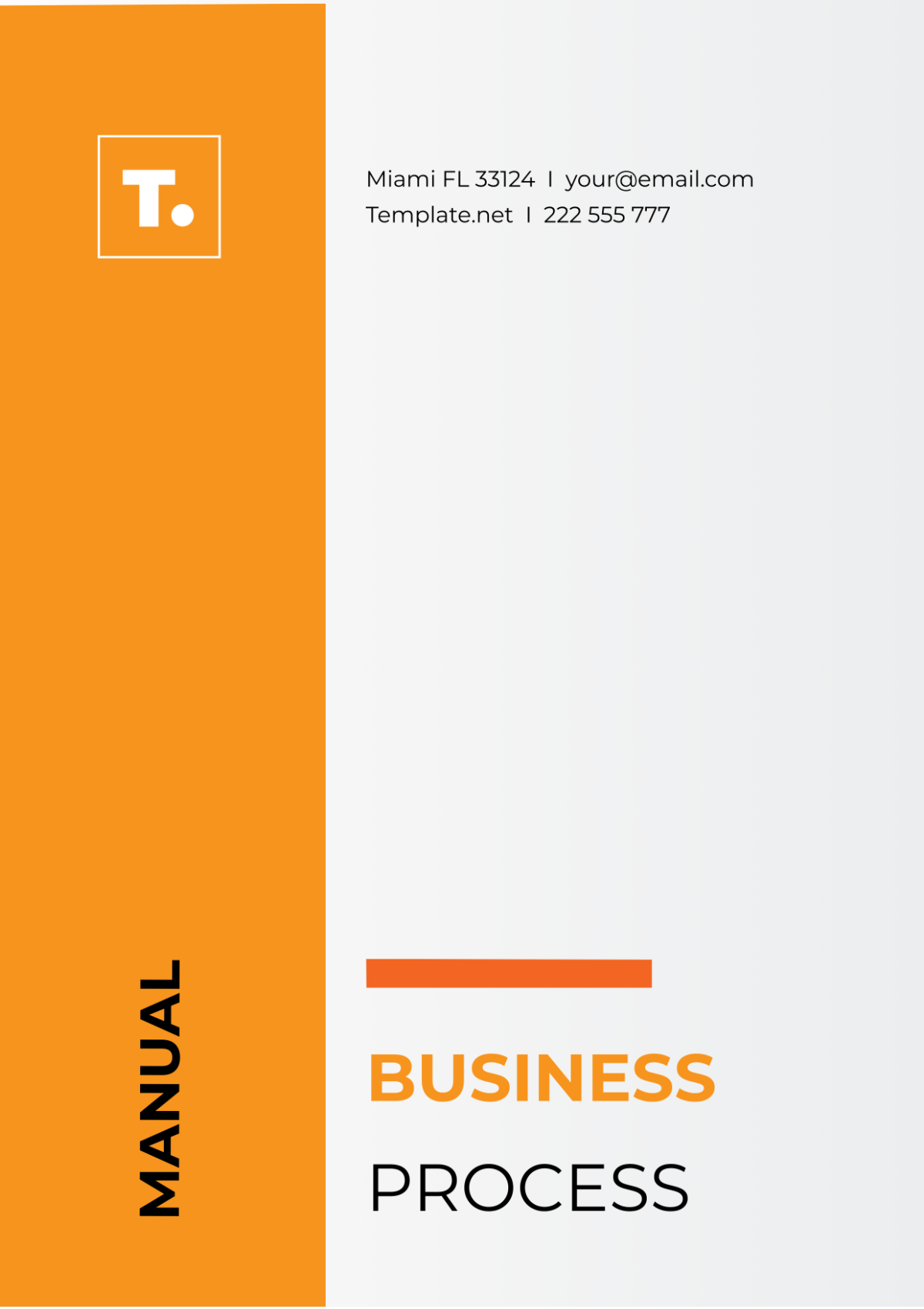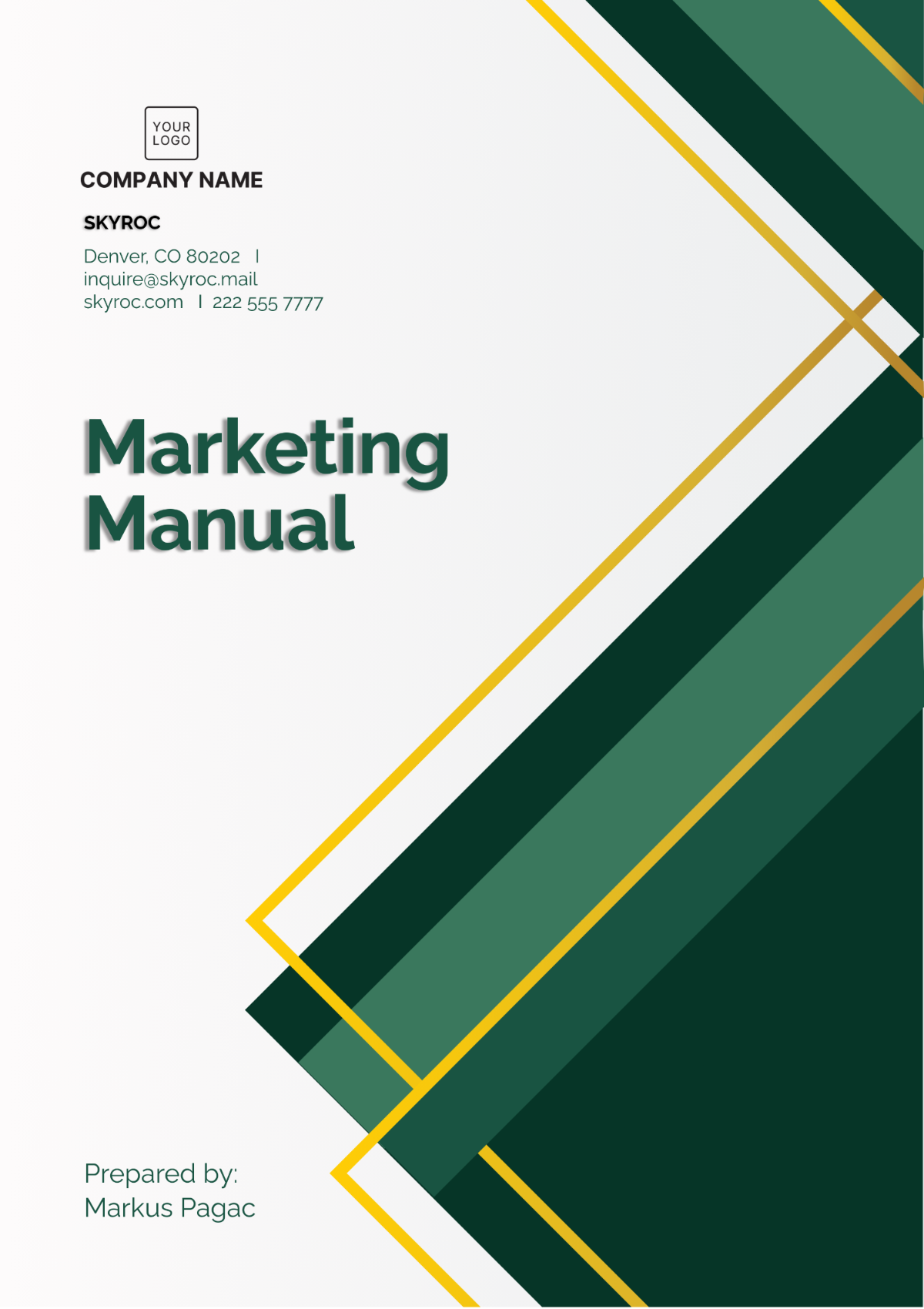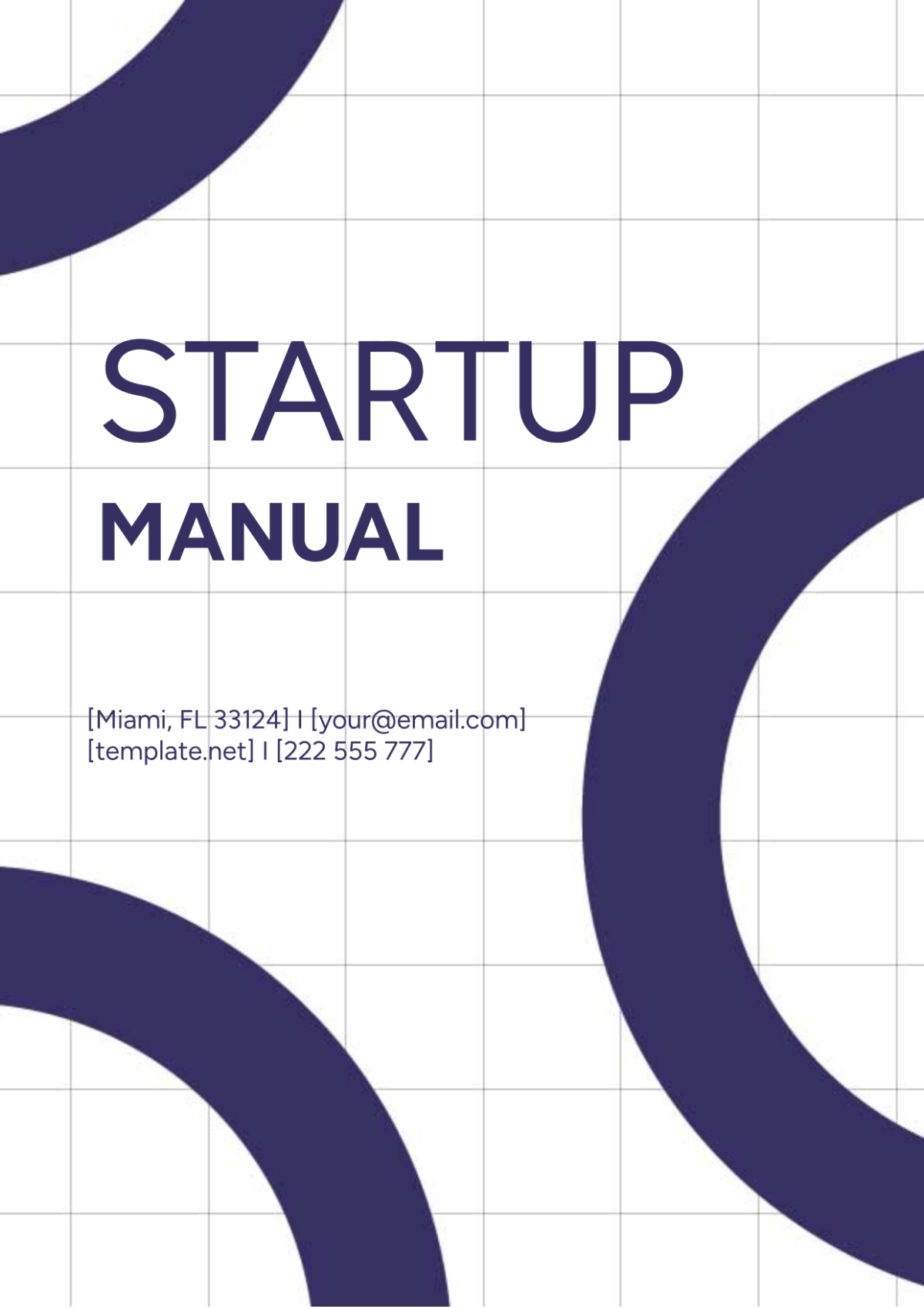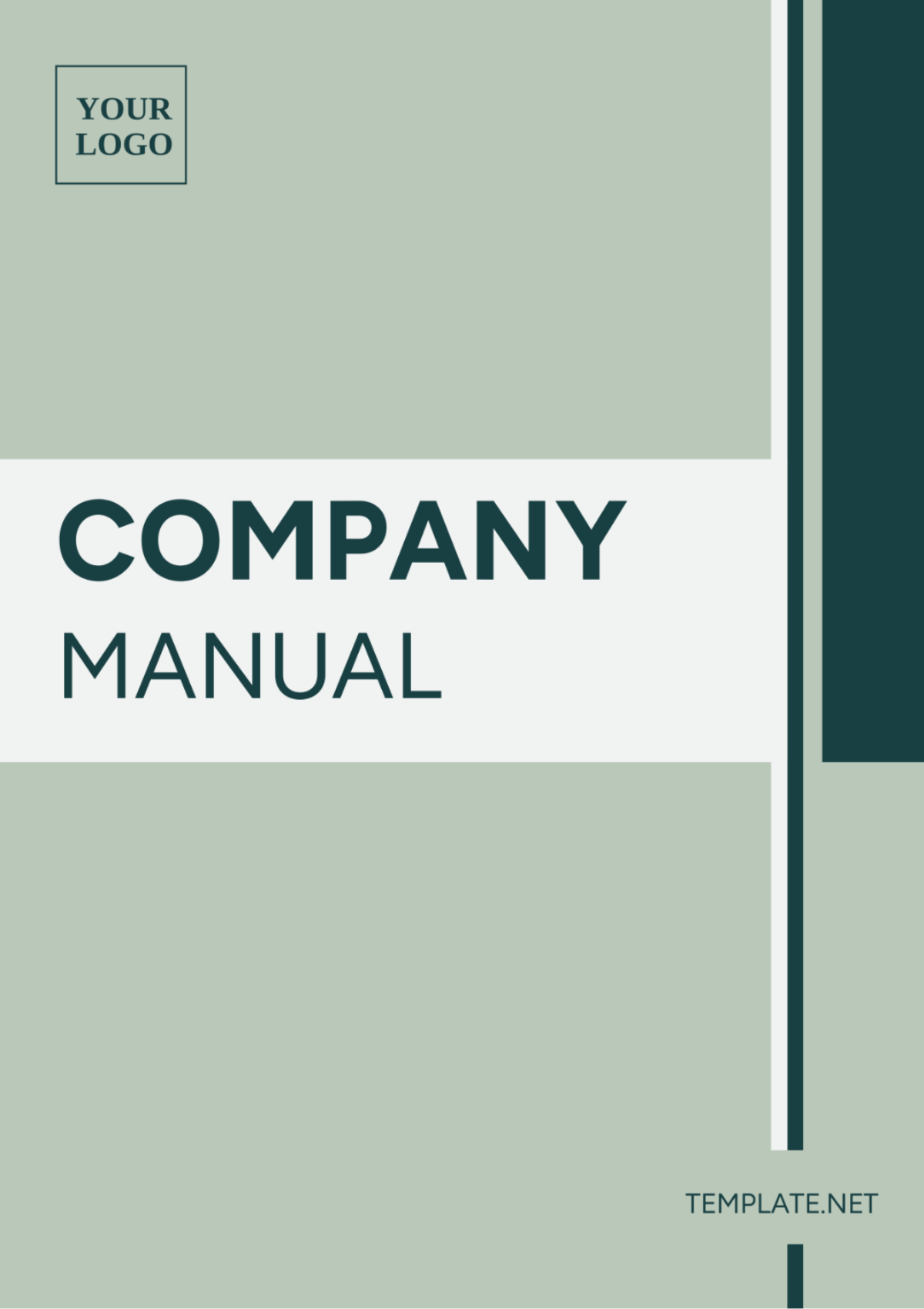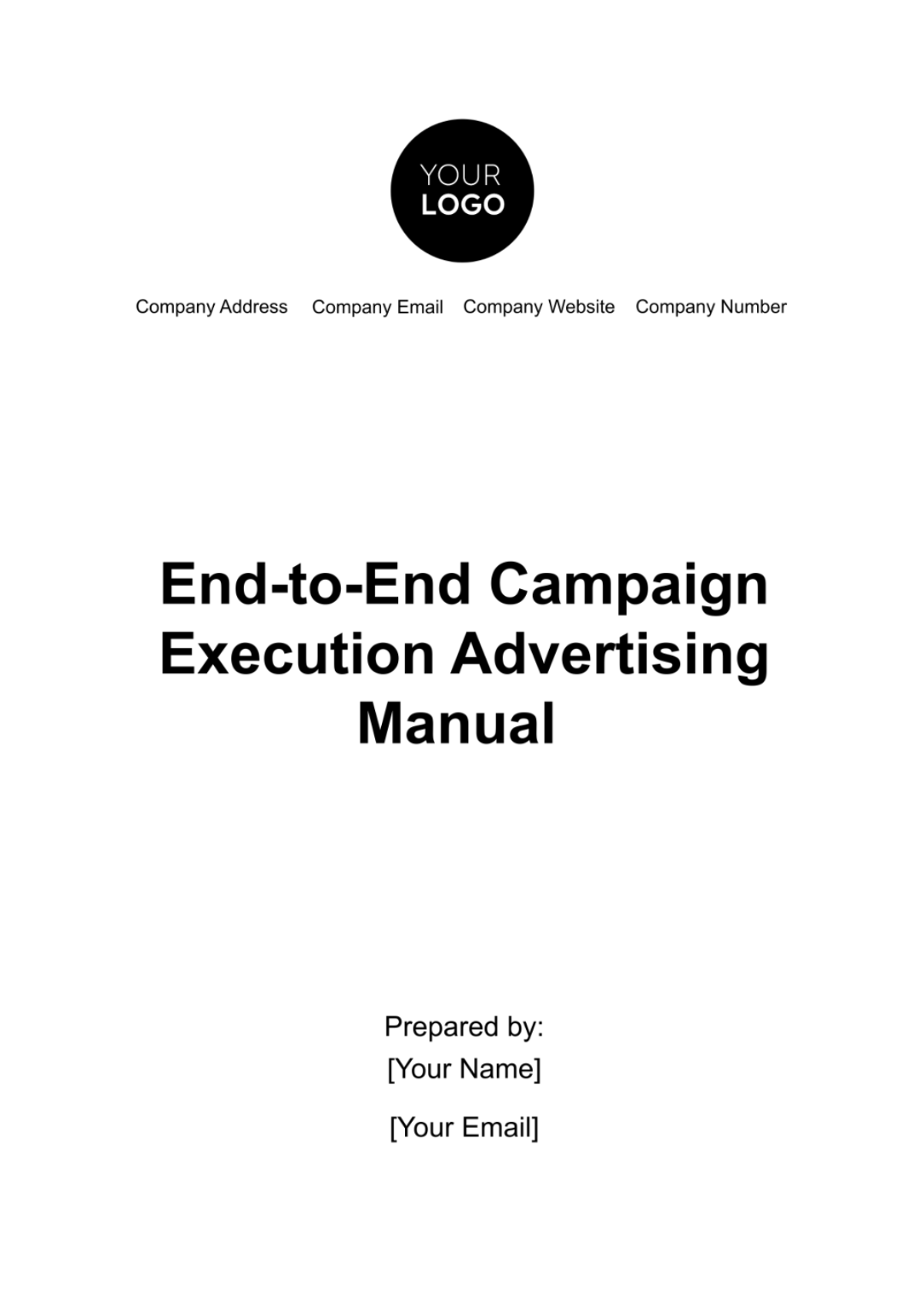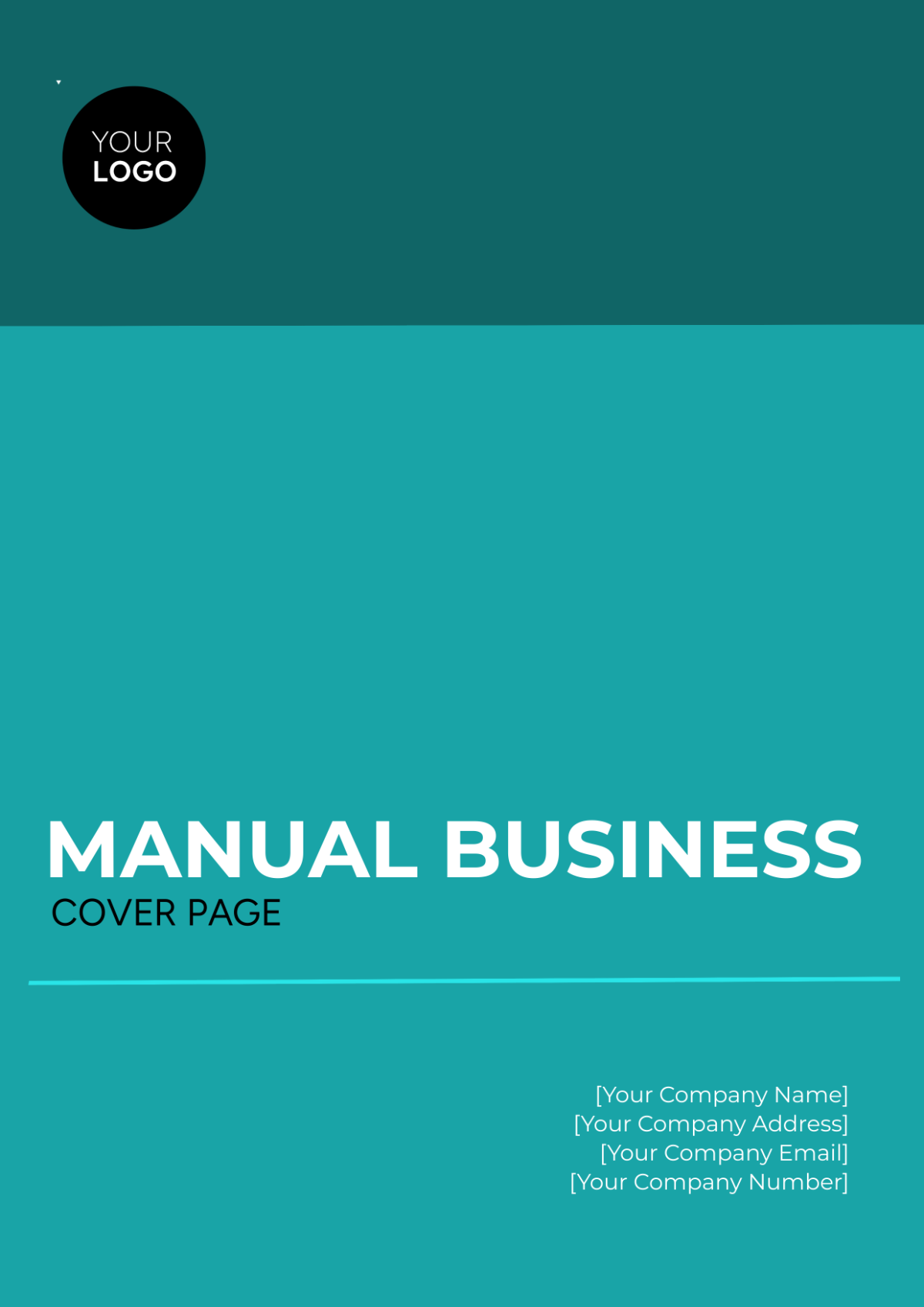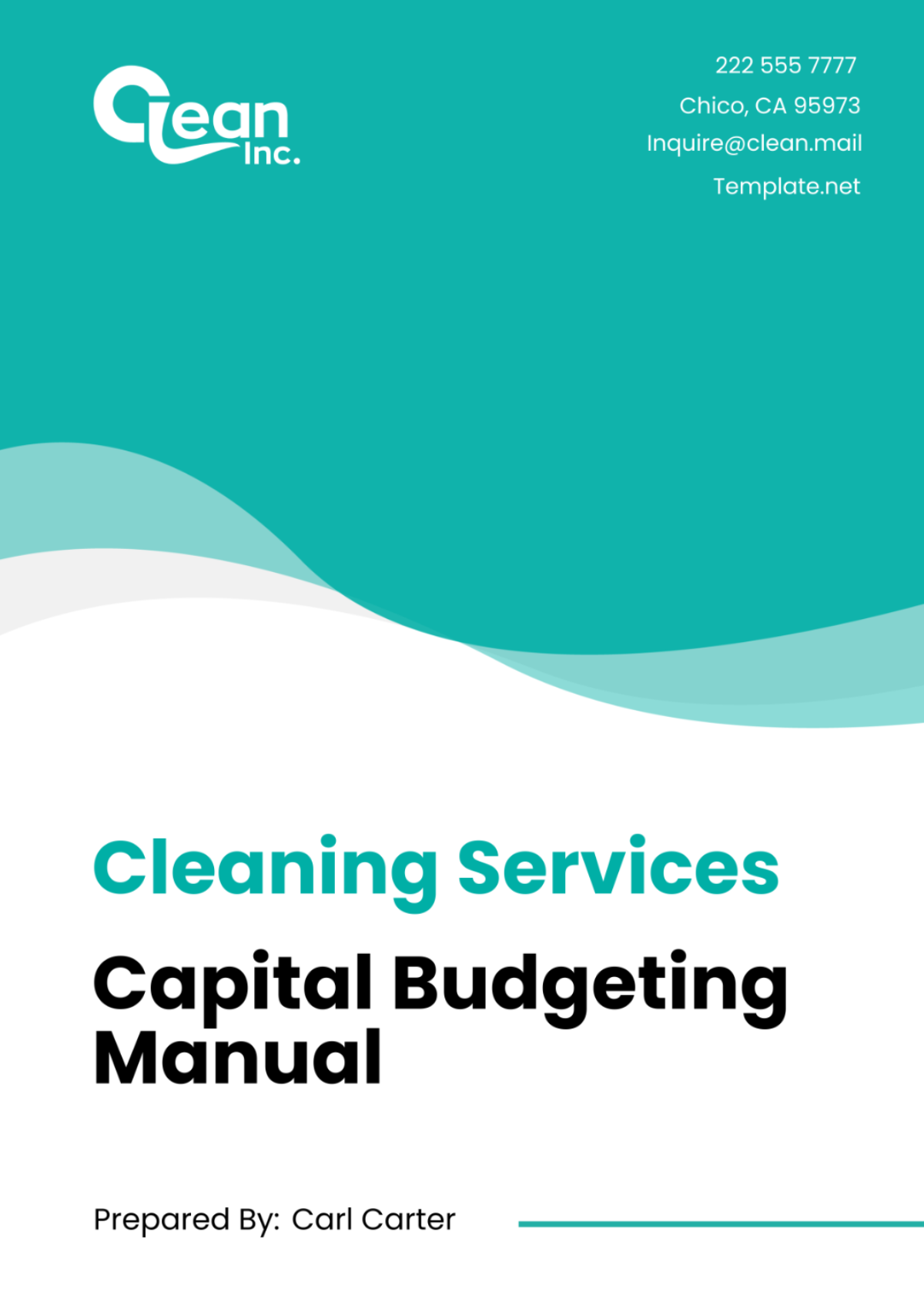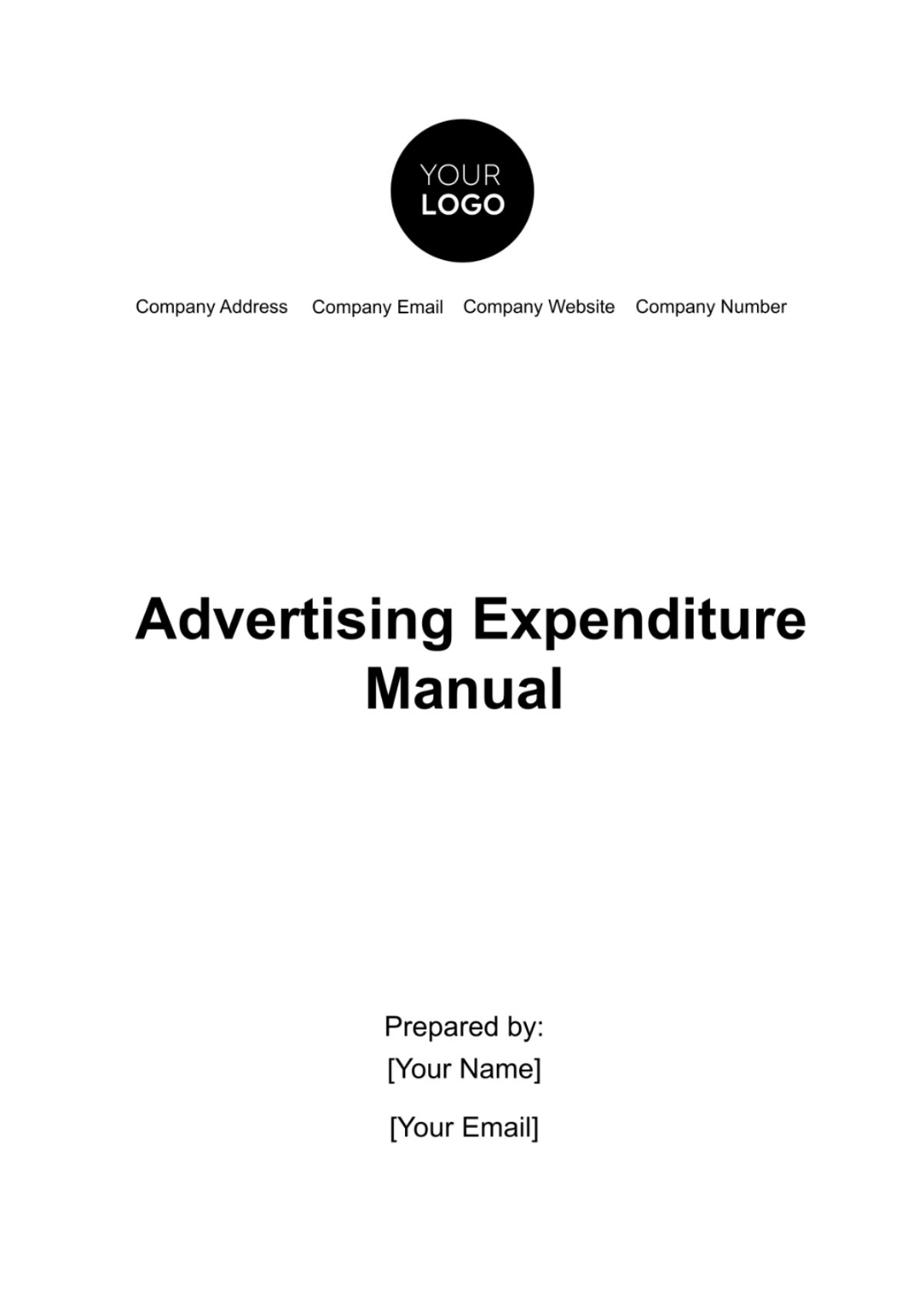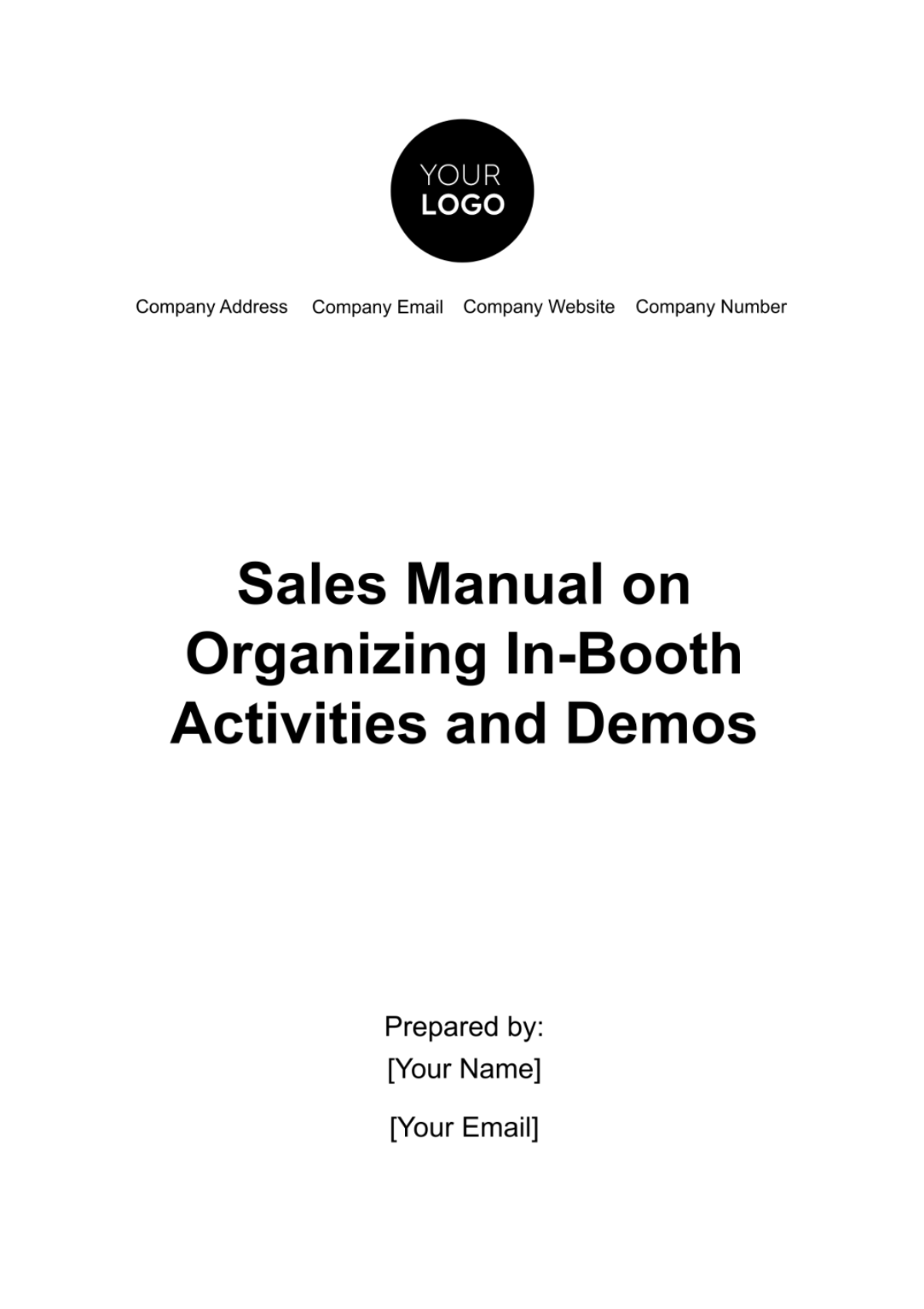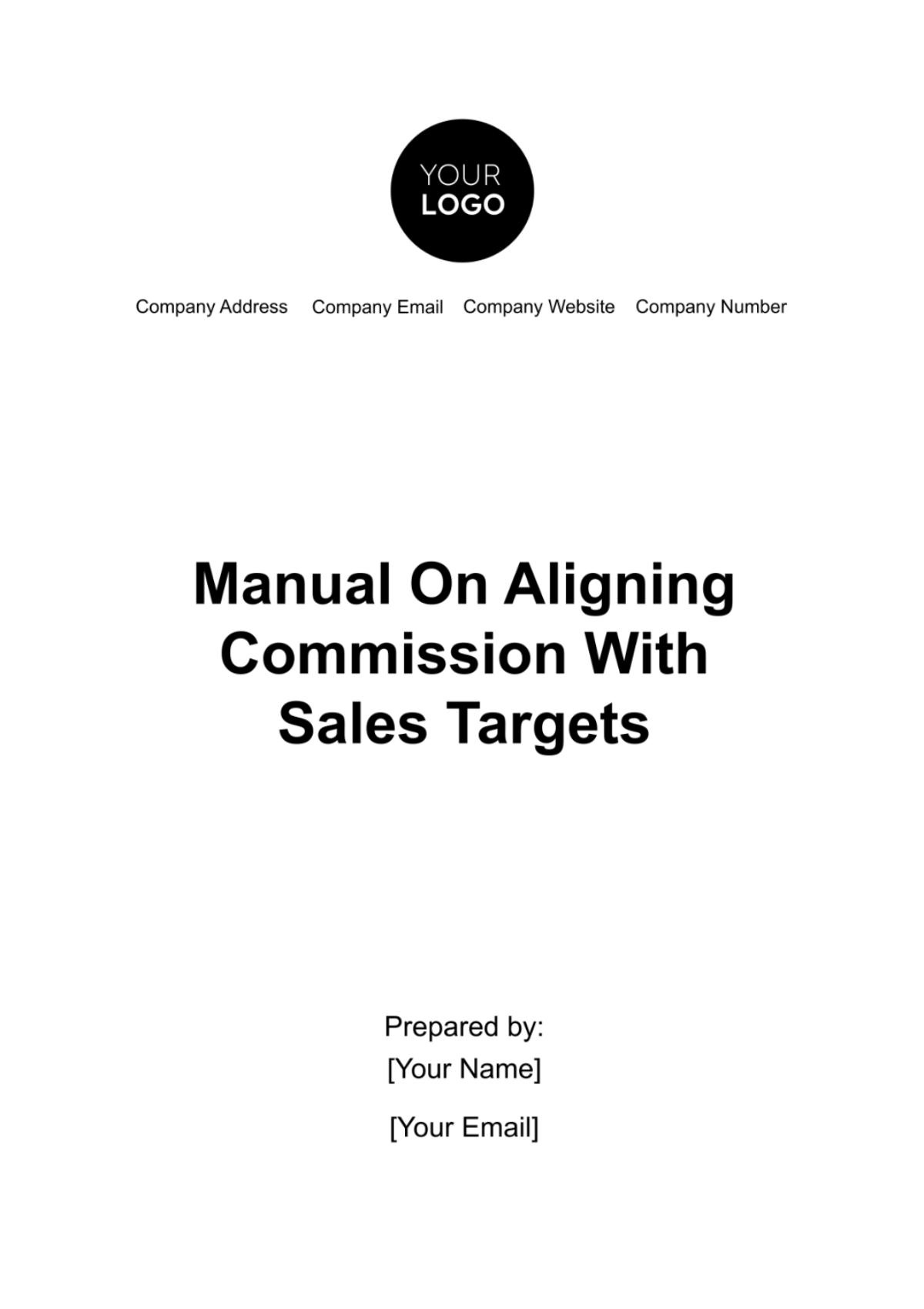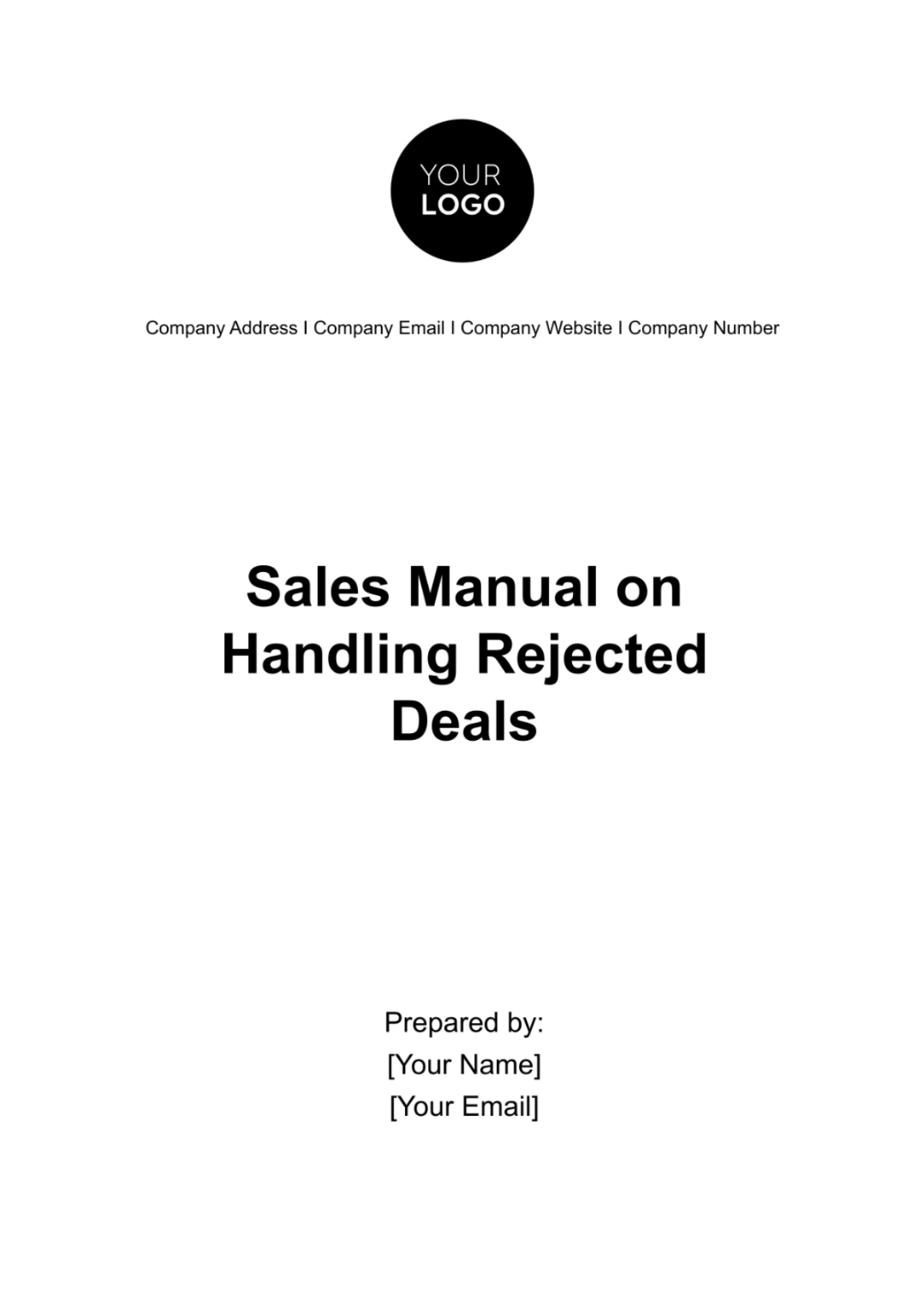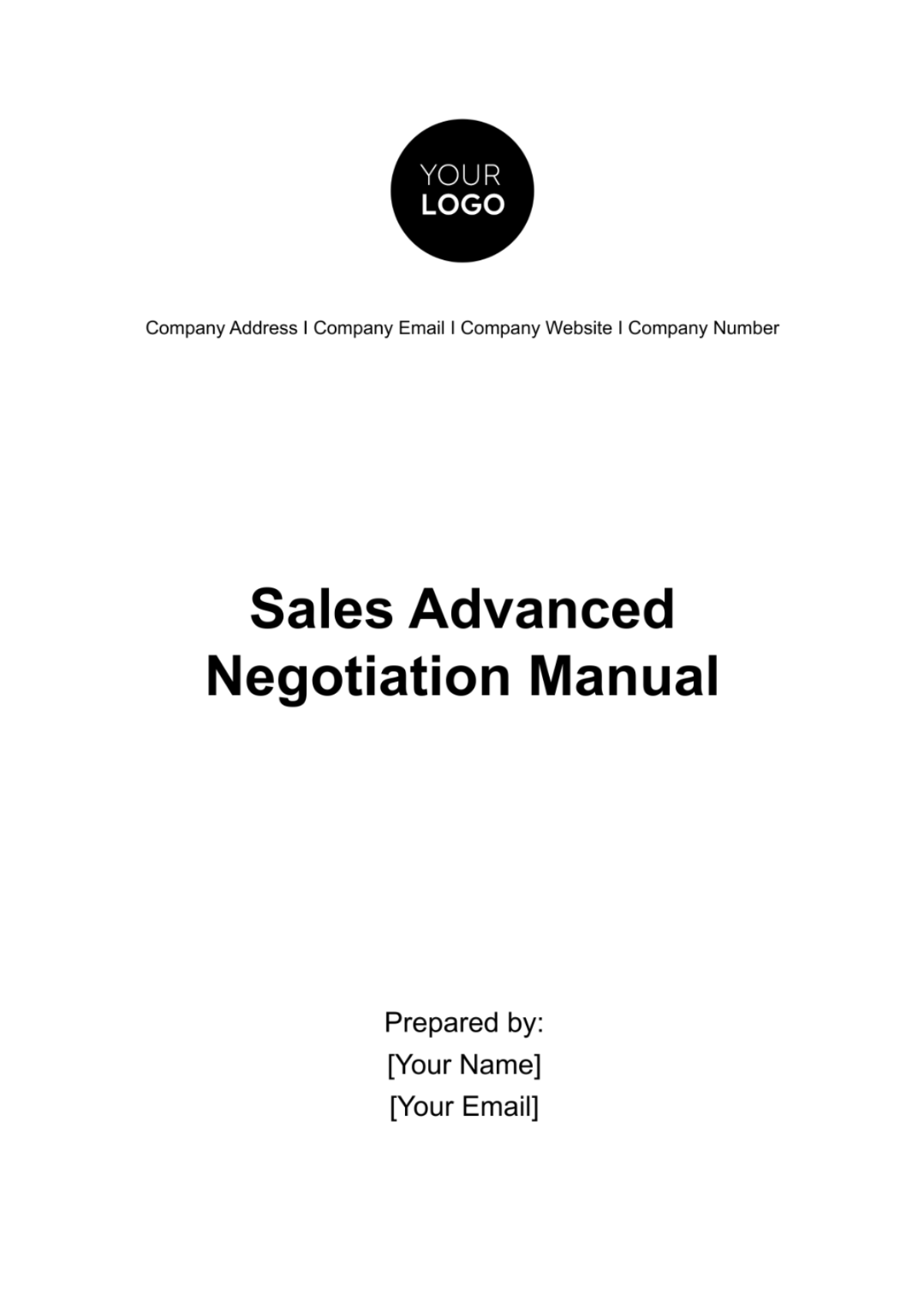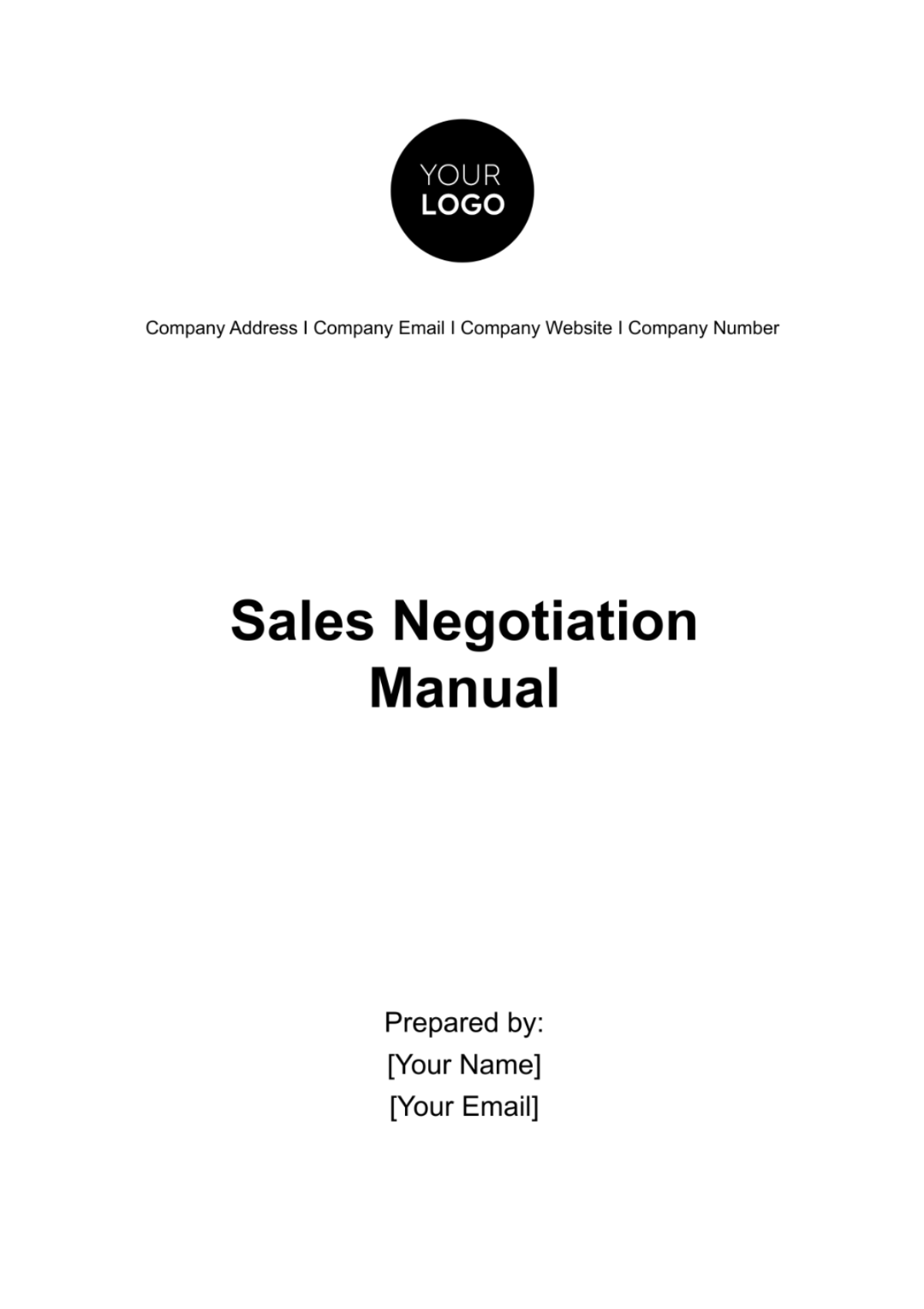Financial Reporting Manual
Introduction
A. Purpose of the Financial Reporting Manual
The purpose of this Financial Reporting Manual is to provide comprehensive guidance on the financial reporting practices and procedures at [Your Company Name]. It serves as a reference document for all stakeholders involved in financial reporting activities, ensuring consistency, accuracy, and transparency in financial disclosures.
B. Audience
This manual is intended for the following audience:
Finance and Accounting Teams: Responsible for data collection, financial statement preparation, and analysis.
Management: Overseeing the financial reporting process and utilizing financial information for decision-making.
Auditors: Internal and external auditors involved in assessing the reliability of financial information.
Regulatory Bodies: Ensuring compliance with relevant financial reporting standards and regulations.
C. Scope and Limitations
The scope of this manual encompasses the entire financial reporting process, from data collection to financial analysis. It applies to all subsidiaries and business units under the umbrella of [Your Company Name].
Financial Reporting Framework
A. Regulatory Environment
[Your Company Name] operates within the regulatory framework established by SEC and FASB. Compliance with these regulations ensures the accuracy and integrity of financial reporting.
B. Accounting Standards
The financial reporting at [Your Company Name] adheres to IFRS and GAAP. This section outlines the specific accounting principles followed to maintain consistency and comparability in financial statements.
C. [Your Company Name]'s Accounting Policies
[Your Company Name] has established detailed accounting policies governing revenue recognition, expense allocation, asset valuation, and other critical areas. These policies are designed to reflect the economic substance of transactions and events accurately.
Financial Reporting Process
A. Data Collection
Sources of Financial Data
Financial data is sourced from multiple channels, including:
Internal accounting systems
Sales and revenue databases
Expense tracking tools
Data Validation Procedures
To ensure data accuracy, [Your Company Name] employs rigorous validation processes, including:
Data reconciliation with bank statements
Cross-verification with invoices and receipts
Automated data validation checks in accounting software
B. Financial Statement Preparation
Income Statement
Revenue is recognized following [Your Company Name]'s revenue recognition policy, aligned with Generally Accepted Accounting Principles (GAAP).
Expenses are categorized and allocated based on [Your Company Name]'s expense allocation methodology, ensuring accurate cost attribution.
Balance Sheet
Asset valuation follows [Your Company Name]'s policy, considering fair market value for tangible assets and market value for financial instruments.
Liabilities are recorded and classified in accordance with GAAP, reflecting obligations accurately.
Equity accounts reflect [Your Company Name]'s ownership structure and changes over the reporting period.
Cash Flow Statement
The cash flow statement details cash inflows and outflows, providing insights into [Your Company Name]'s liquidity position.
Financial Analysis
A. Ratio Analysis
Key financial ratios, such as liquidity, profitability, and solvency ratios, are analyzed to assess financial health and performance.
B. Trend Analysis
Trend analysis evaluates financial performance over multiple periods, identifying patterns and areas for improvement or concern.
C. Variance Analysis
Variance analysis compares actual financial performance against budgeted or forecasted figures, highlighting discrepancies for further investigation.
Internal Controls
A. Control Environment
[Your Company Name] maintains a robust control environment to ensure the accuracy and reliability of financial reporting. Key elements include:
Management Oversight: Regular reviews by top management to monitor financial reporting processes.
Segregation of Duties: Clear separation of duties to prevent conflicts of interest and enhance internal checks.
B. Risk Assessment
A comprehensive risk assessment is conducted regularly, covering:
Operational Risks: Identifying risks related to daily operations impacting financial reporting.
Compliance Risks: Ensuring adherence to regulatory requirements and accounting standards.
C. Control Activities
Control activities include:
Authorization Procedures: Ensuring proper authorization for financial transactions.
Review and Reconciliation: Regular reviews and reconciliations to detect and correct errors.
D. Information and Communication
Effective communication channels include:
Internal Reporting: Timely communication of financial information within the organization.
Training Programs: Continuous training to enhance understanding of financial control processes.
E. Monitoring
Monitoring mechanisms consist of:
Internal Audits: Periodic internal audits to assess the effectiveness of internal controls.
Key Performance Indicators (KPIs): Tracking KPIs to measure the performance of financial reporting controls.
Financial Reporting Tools
A. Software and Applications
[Your Company Name] Accounting Software
Our proprietary accounting software streamlines financial reporting processes, offering features such as:
Automated data entry
Real-time financial reporting
Spreadsheet Tools
We utilize spreadsheet tools for in-depth financial analysis and data presentation. Key features include:
Dynamic financial models
Customized reporting templates
B. Automation Processes
[Your Company Name] Report Generation System
Our report generation system automates the creation of financial reports, ensuring:
Consistency in report formats
Efficient use of financial data for decision-making
Documentation and Record-Keeping
A. Documenting Accounting Policies
[Your Company Name] places significant emphasis on documenting and maintaining clear accounting policies. This involves:
Regular updates to reflect changes in accounting standards and regulatory requirements, ensuring our policies remain current and compliant.
Accessibility to all relevant stakeholders through our Document Management System, fostering transparency and understanding of our accounting principles.
B. Record Retention Policies
To ensure compliance and facilitate audits, [Your Company Name] follows comprehensive record retention policies:
Financial records, including invoices, receipts, and supporting documentation, are retained for a minimum of [5] years, aligning with legal and regulatory requirements.
Secure storage and backup procedures, including off-site data storage, are implemented to prevent data loss and enhance data security.
C. [Your Company Name]'s Document Management System
Our Document Management System ensures:
Centralized access to all financial documents, providing a single source of truth for financial information.
Version control mechanisms, with detailed change logs, to track changes and updates, promoting accountability and traceability.
Auditing and Assurance
A. Internal Audits
Frequency and Scope
Internal audits at [Your Company Name] are conducted annually to assess the effectiveness of our internal controls. The scope includes:
Review of financial transactions and controls, identifying areas for improvement and ensuring compliance with established procedures.
Assessment of compliance with accounting policies, with a focus on the consistent application of accounting principles across the organization.
[Your Partner Company Name] Collaboration
Collaboration with [Your Partner Company Name] ensures a comprehensive audit, covering:
Evaluation of hardware-related financial controls, including a detailed assessment of procurement, depreciation, and disposal processes for hardware assets.
Alignment with industry best practices, leveraging the expertise of our partner to enhance the overall effectiveness of our internal audit processes.
B. External Audits
1. Audit Firm Selection
The selection of external audit firms is a rigorous process at [Your Company Name], involving:
Assessment of reputation and expertise in the technology sector, with a focus on understanding the unique challenges and opportunities within our industry.
Consideration of independence and adherence to auditing standards, ensuring the credibility and objectivity of the external audit.
Audit Report Review
Audit reports are thoroughly reviewed by [Your Company Name]'s management, focusing on:
Identification of key audit findings and recommendations, with a proactive approach to addressing any identified issues.
Implementation of corrective actions as needed, with a commitment to continuous improvement in our financial reporting processes.
Financial Reporting Calendar
A. Reporting Periods
[Your Company Name] follows a structured financial reporting calendar to ensure timely and accurate reporting. The reporting periods are categorized as:
Monthly Reporting: Providing detailed insights into month-to-month financial performance, facilitating quick decision-making.
Quarterly Reporting: Summarizing financial results and trends over a three-month period, aligning with regulatory requirements.
Annual Reporting: Offering a comprehensive overview of [Your Company Name]'s financial position and performance, including audited financial statements.
B. [Your Company Name] Financial Reporting Schedule
Monthly Reporting
Monthly reporting involves the following key activities:
Data Collection: Commencing on the first business day of the month, ensuring timely access to financial data.
Preliminary Financial Statements: Generated and reviewed within the first ten business days, offering an initial snapshot of monthly performance.
Management Review: Financial statements are reviewed by management for accuracy and completeness, facilitating prompt decision-making.
Adjustments and Finalization: Any necessary adjustments are made, and financial statements are finalized by the [15th business day].
Quarterly Reporting
Quarterly reporting includes the following steps:
Data Compilation: Begins on the first business day following the quarter's end, allowing for a comprehensive overview.
Interim Financial Statements: Prepared and reviewed within [15] business days, offering insights into quarterly performance.
Management Discussion and Analysis (MD&A): Management provides an analysis of results and key performance indicators, enhancing stakeholder understanding.
External Auditor Review: External auditors commence their review within the first [20] business days, ensuring the integrity of financial information.
Annual Reporting
The annual reporting process involves:
Year-End Closing: Initiates on the last business day of the fiscal year, ensuring a seamless transition.
Audited Financial Statements: External auditors conduct a thorough review, and audited financial statements are finalized within [60] days of year-end.
Annual Report Preparation: Management prepares the comprehensive annual report, including financial highlights, strategic initiatives, and outlook.
Shareholder Communication: The annual report is communicated to shareholders and regulatory authorities within [75] days of year-end, meeting regulatory filing requirements.
Conclusion
A. Summary of Key Points
This Financial Reporting Manual serves as a cornerstone for [Your Company Name]'s commitment to transparent and accurate financial reporting. Key takeaways include:
The importance of a robust control environment and risk assessment to ensure the integrity of financial information.
The significance of clear documentation, record-keeping, and a structured reporting calendar in maintaining compliance and facilitating audits.
The collaboration with [Your Partner Company Name], ensuring a comprehensive assessment of both financial controls and hardware-related processes.
B. Continuous Improvement Initiatives
[Your Company Name] is dedicated to continuous improvement in its financial reporting processes. Future initiatives include:
Implementation of advanced analytics tools for enhanced financial analysis and forecasting.
Ongoing training programs for finance and accounting teams to stay abreast of evolving accounting standards and best practices.
Regular reviews and updates to this Financial Reporting Manual to incorporate emerging regulatory requirements and industry trends.

